Board Meetings | How To Make the Most of a Board Session
Whether a Moon Board, Tension Board, Grasshopper, Kilter, or any of the other number of boards making their way into climbing gyms or homes worldwide, there are certainly ways to get more out of them. Assuming you have other options for training and climbing, there are also many things the boards don't do so well.
In this episode, Nate and I discuss the ups and downs of board climbing, including a collection of drills we've made specifically for the boards.
The Power Company Podcast is a proud founding member of the Plug Tone Audio Collective.
We don't tweet. We scream like eagles.
You can find the podcast anywhere you get your pods. Subscribe, leave us a review and share it with your friends.
FULL EPISODE TRANSCRIPT:
Kris Hampton 00:37
What's up everybody? I'm your host, Kris Hampton.
Nate Drolet 00:40
And this is Nate Drolet.
Kris Hampton 00:41
And together we form Parker Brothers.
Nate Drolet 00:47
Is this board games?
Kris Hampton 00:48
They are.
Nate Drolet 00:49
Ooh. Okay.
Kris Hampton 00:50
Board games. Ding, ding ding.
Nate Drolet 00:52
Ah! Yes.
Kris Hampton 00:52
Hahaha
Nate Drolet 00:53
Man, I should have made that connection a little faster. I was like, "Board games...Monopoly. Alright. Let's go down this track." I win! I got one. I got a duo.
Kris Hampton 01:01
Haha
Nate Drolet 01:03
Put a checkmark in my W column.
Kris Hampton 01:05
Haha yeah. This is the.... I think this is the first Board Meeting in... shit...I don't know how long....that we have recorded in person, not at one of our homes.
Nate Drolet 01:21
Oh, yeah. Yeah, I don't...I don't know what the last one would have been.
Kris Hampton 01:27
Travel is sort of a thing again.
Nate Drolet 01:29
Yeah.
Kris Hampton 01:30
At least for the time being. Which is kind of cool.
Nate Drolet 01:34
Yeah. Yeah, it's fun. It's rad that this like kind of worked out. We didn't really plan to meet up here together. We just happen to both kind of be here.
Kris Hampton 01:42
Yeah, we're both in Vegas climbing at Red Rock, sort of independent of each other. But our times overlapped, so we're climbing and recording while we can. And it's just it's nice to travel. And I mean, every everyone is still cautious. You know, we're still wearing masks, but, but it is nice to travel and not feel like "Oh, I have to get this in right now while I can before things shut down again."
Nate Drolet 02:11
Yeah.
Kris Hampton 02:12
Yeah. And I'm here with a bunch of Canadian friends. The border just opened. So it's, it's pretty fun. Where are you headed after here? Home?
Nate Drolet 02:24
Back home. Yeah. So this is kind of the start of the season for me. I survived the Houston summer. And it's yeah, I'm excited. This, this trip was kind of to get out, have fun. I'm all back for my finger injury. So this was a chance to try hard again for the first time in quite a few months.
Kris Hampton 02:45
Nice.
Nate Drolet 02:45
And just to remember how to move on rock.
Kris Hampton 02:47
Yeah.
Nate Drolet 02:47
Which is gonna keep taking a little while.
Kris Hampton 02:51
Hahaha
Nate Drolet 02:51
But it's been good. It's been fun. I was in Joe's for like a week before this and then Vegas for I think about a week in total.
Kris Hampton 02:58
Yeah, I think it's, I think it's good for people to hear that you've got you've got a lot of experience on rock. But you've been in a gym for a long time at this point, you know, largely just climbing on plastic and getting used to real rock again. Particularly, you know, switching styles, switching rock types on short trips, or whatever is is super challenging. So for someone who doesn't maybe have a ton of outdoor experience, it can take even longer. So I think it's good to hear that you're like, "Oh, yeah, I'm trying to get my feet back under me."
Nate Drolet 03:35
I'm glad to hear that my suffering can be good, good to hear for people.
Kris Hampton 03:39
Hahaha. That's why we're here, Nate. All right, today, we are here to talk about a question I got from a good friend of the podcast, Arash. Is that correct?
Kris Hampton 03:53
I'm trying to say that the best I can. Yasmeen, my friend, good friend Yasmeen, will be proud that I'm trying to say an Iranian name as best I can. His question is actually a really great one that I'm surprised we hadn't talked about and he was too. He's like, "Don't you have an episode on this?" But he wanted to know how to structure a board session, particularly when you're going climbing at your gym, you're one of his complaints was feeling like the grading at the gym was inconsistent and it was really hard to quantify progress. But then that also led me to thinking about if you're climbing at your gym, and it's just too busy, and you don't want to deal with the crowds, and you're switching over to the board area and you're trying to complete your session, whether it's a training session in one of our training plans or just your normal session that you do every week and you're trying to restructure that to sort of fit into the board parameters. What's the best way to do that?
Nate Drolet 03:53
I think so.
Nate Drolet 05:01
Yeah. Yeah, I think this is a good question. You know, it's also just nice for people who want to change things up. You know, I just spent a long, nine month summer in Houston, and yeah, it's nice to be like, "Oh, I'm gonna, I'll go climb on boards for like, you know, two, three months where that's like, more of where my focus is". So yeah, I think there's a lot of good reasons. Escaping the youth team.
Kris Hampton 05:29
Haha. Yeah. Totally
Nate Drolet 05:29
A great reason to leave the regular gym and go over to where the boards are. And we when we say "boards", we are meaning spray walls, or systems boards, or, like commercial boards. So that's Tension Board, Moon Board, Kilter Board,
Kris Hampton 05:45
Grasshopper
Nate Drolet 05:46
Oh, Grasshopper is a thing now.
Kris Hampton 05:47
Yeah, yeah, there's quite a few that do a lot of different things. They all kind of fill different spaces and as a result, each one sort of lends itself to a slightly different focus, so to speak. And there are some drills, some aspects of training that, that really work well on a board and others that maybe don't work as well on a board. Some that may work just fine on a board, but will also work just fine in the commercial gym. So if your time on the board is limited, then maybe focus on some specific things and do those other things in the regular gym, and we're gonna try to get to all of those. Question for you. You have way more experience in this in recent times than I do, because I have my home gym and a bunch of outdoor rocks. So those are kind of my two paradigms I'm looking at. When you're switching from regular commercial gym, you're avoiding the youth team, you move into the board zone, is there a mindset shift that has to happen for you or do you kind of look at the two sort of the same?
Nate Drolet 07:06
I think there's, there is a mindset shift. For me, I think it happens kind of naturally and this is something I've talked with other people about. Like when I climb on a Tension Board or a Moon Board and those are the ones.... I haven't climbed on a Grasshopper or Kilter, though I'm kind of familiar just from coaching. But when I switch to those, for some reason, I switched to more of an outside mindset in that I just kind of accept like, "Okay, this is the challenge". I don't know why that is. It's really funny because, you know, these problems were set by someone just the same way as a commercial gym problem was set by someone. But it's really easy with commercial gyms to fall into this mindset of like, "Ah, I don't know, I don't love this". Even though I preach like, "Don't do this", like, I still naturally fall into that mindset of like, "Oh, I'll go do something else. There's a bunch of things here." But you know, if it's, like, if Will Anglin set it on the Tension Board or like if I see, you know, if it's one of those things, or if it's a Moon Board benchmark, like, man, I don't care what the grade is. Like, it doesn't matter how weird it is, or strange it is, I'm like, "Okay, I'm just gonna do this, I'm gonna figure it out" and I have a much more serious approach with it.
Kris Hampton 08:19
When... something to ask, you know, based on what you just said, do you feel like the grades are more consistent on boards than in commercial gym spaces?
Nate Drolet 08:32
I mean, it depends gym to gym. I, I mean, they're, I think they're consistent...so what was it.. on our discussion group.
Kris Hampton 08:41
Yeah
Nate Drolet 08:41
Our community forum. Someone did a good job of, or was it was you that said, like thinking of them as different universes.
Kris Hampton 08:49
Oh no that was someone else.
Nate Drolet 08:50
Okay. Yeah, it was...one of the community members was like, "I think of boards as different universes" and I completely agreed with that. Like, I think, to me, Moon Boarding is dramatically harder than climbing outside. Like, I climb two to three grades worse on a Moon Board than I do outdoors. I kind of find the same thing with Tension. I find the Tension Board even harder a lot of times. It depends on the setter with that. Gym climbing can be hard, but it really depends, like very much on the gym. But you know, you go outside and it's the same thing. Like, to me like the Southeast might feel different than Colorado, which might feel different than California climbing. All, you know, everything's different. There's no consistency. Everything's its own universe.
Kris Hampton 09:37
Yeah, I sort of feel the same way. Like there was some talk in the forum and what we're talking about, we have a new community forum, community.powercompanyclimbing.com, and there was some talk about people felt like the the Moon Board had its grading system, the Tension Board had its grading system and so on. I have a hard time finding consistency on the boards, as you know, the same as I do in a gym. And it and maybe I'm sure it's partly my own mindset, like the way I react to these things is immediately by saying, "Okay, I'm missing something"instead of "Tese grades are wildly off", but I feel like I can play to my strengths on a on a board the same as I can in a regular gym set, and then the grades are going to feel one way. And if I play to my weaknesses, they're going to feel a whole nother way.
Nate Drolet 10:36
Totally.
Kris Hampton 10:37
So, you know, I think if you find that the grades are more consistent on a board, great. I think that's a good way to measure progress. It doesn't mean you have to shift your entire training there, though. It could just be a check-in spot for you. If that's the reason you want to use it, because it's more consistent grading, then maybe try to release the attachment to the grades when you're climbing in the commercial gym and, and doing your training and then when you want to do a check in period, go back to that, those benchmarks, go back to those Will Anglin problems on the Tension Board and, you know, try to see how you measure up versus how you were the last time you were there. And that can be a really great way to quantify your progress, because you're not learning the test by climbing on there all the time and getting super familiar with the board. But the grade has stayed the same and hasn't changed like all of the gym problems do.
Nate Drolet 11:40
Yeah. And that's, I mean, that's one of my favorite uses of boards
Kris Hampton 11:44
Yeah
Nate Drolet 11:44
I mean, I'll go without climbing on them for a while. And it's you know, honestly, it's a lot like climbing outdoors in that let's say if I hopped back on the Moon Board and I'm like, "Okay, I want to check and see where I'm at on these benchmark problems." I have to keep in mind, it's like, okay, this is my first day back on the Moon Board in, let's say, a month and a half. Like, I have to compare that to first day back on the Moon Board feeling,
Kris Hampton 12:07
Right. It's not last day on the Moon Board when I had been climbing on it for three months.
Nate Drolet 12:11
Exactly. Yeah.
Kris Hampton 12:13
Yeah, totally.
Nate Drolet 12:14
So it's important to keep those things in mind and maybe it's like, give yourself a couple sessions to get back into the swing of things. Like on a Tension Board, you have to keep a lot of tension, like the foot holds a really slippery, you have to squeeze holds differently. It's kind of its own thing. With the Moon Board, it especially... like, well, I've only climbed on the 2016 set, but it really benefits people who can just jump and latch holds. So if you've good contact strength, all the holds are pretty incut and there's not a really terribly small hold, so if you can launch and latch, then you can really go a long ways on that board, just with that style.
Kris Hampton 12:54
Yeah
Nate Drolet 12:55
You can kind of throw a lot of other styles behind, and just really overcompensate with that and that's a very like, that can be useful for some types of climbing outdoors or indoors or such. But it's very specific and that can take, you know, a couple sessions to kind of remind your body how to do.
Kris Hampton 13:15
Yeah, totally. Let's, uh, let's start with the very beginning, so warming up. Something I hear a lot is that it's really hard to warm up on some of the boards. And and I agree. It's, it's a different thing for sure. You know, you can't go just climb a bunch of V0, V1, V2 to warm up.
Nate Drolet 13:34
Yeah.
Kris Hampton 13:36
But that doesn't mean it's impossible. What are your favorite warmup tactics for doing a board session?
Nate Drolet 13:44
I mean, first off, like if, if I have access to commercial gym, I'm going to warm up on that.
Kris Hampton 13:48
Totally
Nate Drolet 13:49
Though, it can still be challenging to transition because a lot of times gym holds tend to be a lot bigger. And even if they are like, somewhat smaller, they're still like rounded and comfy and a lot of your hand touches the hold, because they're big and pretty, like which is awesome. But then no matter what board you go to, you are then like just kind of grabbing with your fingertips. So I always end up having...like, what I typically do is I warm up in the gym for you know, let's say 15-20 minutes, then I'll do a couple actual board warm ups. So for me that might be like, I mean, honestly the easiest that I can and it depends if your board is adjustable or not. Like all the boards that are in Houston are fixed at 40. Like if you can crank it up to you know 10, 15, 20, awesome. You're good to go right there.
Nate Drolet 14:38
You don't even need to worry about it. But if you have a fixed board, which a lot of Moon Boards are, Tension Boards are. Yeah, warm up in the commercial gym. If you have to warm up on the board itself, I like doing off the wall warmups. You can do pull ups, lock offs, maybe a couple light hangs. And I don't know why no one ever does this, but you can stand start boulders. You can also just do one move at a time.
Kris Hampton 14:38
Yeah.
Kris Hampton 15:04
Totally
Nate Drolet 15:05
And that's, it's the same way I warm up on boulders outdoors. Like if I don't have anything else around, then maybe I'll do a few pull ups on a big hold, I might just pull on and hold a position. But I'll just do single moves, or a high stand start or I"ll do the top out a couple times.
Kris Hampton 15:22
Yeah, that's that's what I have written down as well. That's good beta. Pulling into just positions, you know, holding a position, grabbing, grabbing holds and just walking your feet around on different holds.
Nate Drolet 15:37
Ooh. That's a really good one. If you want to get like your midsection warm for like foot tension, like, step on the wrong part of holds, try and step on the bolt holes
Kris Hampton 15:45
Step further away, step higher and higher, and get yourself into different positions. And you know, then you can do single moves, you can eventually start linking a couple moves together. There's there's no rule anywhere that says once you pull on, you have to be trying a whole boulder.
Nate Drolet 16:03
And you have to pull on from the ground.
Kris Hampton 16:05
Right. So especially indoors, it just doesn't matter at all. You can you know, there are no real rules. You can climb however you want on that thing. And I'm sure there are some Moon Board fanatics out there right now foaming at the mouth freaking out that I said there are no rules. But there aren't, especially when you're warming up. Do whatever. Break the rules, you know, toe hook the edge of the board, if that makes it easier.
Nate Drolet 16:31
Use open feet.
Kris Hampton 16:32
Totally
Nate Drolet 16:33
Like that's another good one. Use any footholds. And that can be a good way to kind of work into smaller holds.
Kris Hampton 16:40
Yep.
Nate Drolet 16:42
Yeah, actually, that's a, I had some clients who they were like, "I really want to break into the benchmarks" and this is on the 2016 set. And so I just went into my account, which I think is cruxpadwell on the Moon Board, so I just reset, I don't know, like 15 of the intro difficulty benchmarks, but I just added a couple big footholds to it.
Kris Hampton 17:03
Totally.
Nate Drolet 17:03
So you can still grab all the same holds. But it's, what's funny is most of them I only added one foot and suddenly it was like, oh, this is a really great, like, kind of bridge into that same boulder problem.
Kris Hampton 17:17
Yeah, that's a tactic I think is drastically underutilized by people on boards and spray walls, are slight variations to hard boulders.
Nate Drolet 17:28
Yeah
Kris Hampton 17:29
It's it's so powerful to use and I don't see anybody using it. It drives me bonkers.
Nate Drolet 17:35
Yeah.
Kris Hampton 17:37
Also, if it's your own board, and you're having trouble warming up on it, add a few low profile jugs.
Nate Drolet 17:43
Yeah
Kris Hampton 17:43
There's lots of them out there. Escape makes a couple of my favorites, that we have several sets of each on our wall.
Kris Hampton 17:50
I love those Dual-Tex.
Nate Drolet 17:51
Yeah.
Kris Hampton 17:52
Are they screw on or did you just screw them on?
Kris Hampton 17:53
They are screw on. Dual-Tex screw on jugs. And then they also have these, these I can't remember the names of either, but I'll get them and I'll link them in the show notes here... that are just tiny, little, mini jugs.
Nate Drolet 18:09
Those are great too.
Kris Hampton 18:11
And I, I love having those around, and they're not going to take up a ton of space. Sure, they might get in your way for a problem or two at some point and if you really are dedicated to that boulder and want to do that boulder, take the hold off and do the boulder.
Nate Drolet 18:27
It's your wall. You can do what you want. There are no rules.
Kris Hampton 18:30
Hahaha. Do whatever. Haha.They're coming for us right now, Nate.
Nate Drolet 18:35
Haha
Kris Hampton 18:38
But I also sort of like the challenge of having to move around extra holds, you know? Why not? It's it's realistic. So if I had a Moon Board, I would have jugs on it. I would have slopers on it. I'd have I'd have a Boss. Let
Nate Drolet 18:53
Ha. Get out of here. No. I'm stopping you right there.
Kris Hampton 18:59
Hahaha
Nate Drolet 18:59
You lost me at trying to move around holds. Haha.
Kris Hampton 19:01
An upside down Boss as a start hold on my Moon Board.
Nate Drolet 19:06
Haha.
Kris Hampton 19:07
All right. Anything else on warming up? I think that covers it
Nate Drolet 19:13
Do it. Just actually do it. That's a big one. Also, I
Kris Hampton 19:17
That's true. Let's..can we talk about that for a second? Just do it. Don't....there's a pretty drastic difference if you have any sort of work capacity, between how you can perform before you're warmed up and how you're performing once you're warm.
Nate Drolet 19:34
Oh my god, it's painful.
Kris Hampton 19:35
I know there's some talk on the interwebs about do we even need to warm up? Yeah, you do. And if you go climbing with any climber has been doing it for a long time, they know when they're warm, and when they're not. And the performance is drastically different, so.
Nate Drolet 19:54
Yeah, it's, you know, maybe the 16 year old at your gym
Kris Hampton 19:58
Right
Nate Drolet 19:58
Who can roll out of the tent, eat a Pop-Tart and go give like flash burns on his project can do it like but yeah, you're probably not that person.
Kris Hampton 20:07
No. And there are no 16 year olds eating Pop-Tarts listening to this podcast. So
Nate Drolet 20:11
I hope they are.
Kris Hampton 20:13
Haha
Nate Drolet 20:13
One other thing I'll say, so your Ravioli episode with... on the Moon Board, or duh
Kris Hampton 20:21
Duh. Yeah
Nate Drolet 20:22
That was... the Ravioli episode.
Kris Hampton 20:24
Redundancy.
Nate Drolet 20:25
Thank you. One thing I absolutely loved was he talked about when he was short on time, he just went through his warm up circuit. Like he didn't say, "Oh, I rushed through to try and skip ahead so I can try my project." It was "I go through my normal warmup, which involves I go through circuiting problems. And if I only have 15 minutes or 45 minutes, that's it. That is.. I do my thorough warmup and I leave."
Kris Hampton 20:51
Yeah.
Nate Drolet 20:51
And that dude has climbed a lot. He's stayed really healthy. Like he's Moon Board champ of the world. You know, his accomplishments speak for themselves. And I can't say this enough. Don't rush warmups. Like if you don't have the time for a long workout, yeah, just go through your warm up. Lke go through your warm up and if you and that's like, that's good. Like, you'll get more days in, be consistent.
Kris Hampton 21:19
Absolutely.
Nate Drolet 21:20
But rushing a warm up, skipping ahead, like that's a great way to tweak something. And you can't make up enough with a few rushed sessions to overpower you know, three months of recovering a pulley injury.
Kris Hampton 21:36
Yeah, totally. I think that's really good beta. And he's, you know, you just saved us from all the Moon Board fanatics who were coming after us by mentioning the Ravioli Biceps episode. I feel safer sitting here right now.
Nate Drolet 21:53
Haha.Yeah.
Kris Hampton 21:56
From there, from the warm ups, I think you're, depending on you as a climber, and your strengths and weaknesses, your session can almost look like a normal session. But I do think there are some things that boards do really well and, and some different boards do some things differently and I'd like to try and highlight those things a little bit, what they are and what you might be looking for. Let's talk projecting. For me, if I'm doing like single session sends, or super short term, mini projects, I sort of prefer the commercial gym, if I have that option, because there's going to be high turnover. I can have endless mini projects, you know. But when it comes to long term projects, boards really shine here. And, and I think this is where you should be investing your time on a long term project, even if your commercial gym is empty when you're there. You're there at six in the morning, you're never impacted by the youth team or, you know, whatever club is coming in. I would still go to the board for the long term projects, just for the sake of I'm going to have it six months from now and I don't have to like, try to spend all of my time on it right now and end up injured because I've grabbed the same hold 400 times in the last two days. So for me, that's one of the big ones.
Nate Drolet 23:40
Oh, yeah, I think that's a good one. I would even extend that to like building circuits.
Kris Hampton 23:46
Exactly.
Nate Drolet 23:48
That is, to me, one of the most powerful aspects of a board is being able to have a circuit in kind of in two different definitions of it, because it's a broad term. One being okay, here are a lot of problems that I've done in the past that have been challenging for me to some degree, whether that's because of their style, or just their pure difficulty and I can go back and repeat them as part of a workout. And that's just a great tool to use because if you already know the beta, you're already comfortable with it, it can be good practice of giving great efforts, of executing, but also it's just a great way to get a workout in because you're not spending time beta finding. So like it's true...it's you know, it's like lifting weights, in one way. But another way you can look at circuits like some people refer to circuiting as like the equivalent of 4x4s or like 20-move circuits or things like that for endurance work or power endurance work. Once again, this is great for that because it's not going to get reset. You're not going to lose these things and you can kind of come back to it in the future.
Kris Hampton 24:52
Yes, circuits are so powerful. You can you can alter the parameters of a circuit in all sorts of directions to be really specific to the thing you need, or the thing you want to work on, or whatever. It's, I mean, they're, they're one of my favorite tools to use, just by adjusting the parameters of intensity, the time that you're spending on the wall, the time that you're spending resting. And circuits are a really good, you know, checkmark in the, maybe you should do some mini projects on these boards, you know. Don't do all your mini projecting in a commercial gym. Having a series of mini projects on the board that you can then turn into a harder circuit is a really great idea. And you know that those mini projects can go from mini project to repeat project to circuit someday.
Nate Drolet 25:51
Yeah and for fitness work.
Kris Hampton 25:54
And repeats are a thing both of us use pretty regularly. I think it's one of the power of one of the powers of boards are doing repeats. And I have, I'll have my, like, three strike repeats that I tried to do each session, where I just pick something that was a mini project for me at some point, and I try to do it in three goes, you know. But then I'll also have season repeat projects where this is the hardest thing I did last season. It's on my repeat list for this season. I'm not doing only new stuff in the gym. I'm also going to try to repeat these things that I did in the past. So, you know, I think having repeats that take you different time, time ranges is also really, really important to have.
Nate Drolet 26:48
Yeah, yeah, just because you've done a climb before doesn't mean you can't still learn from it and keep getting stronger from it.
Kris Hampton 26:55
Yeah, and keep you you know, to harken back to an episode we did recently, they can help you keep your skills current.
Nate Drolet 27:01
Yeah
Kris Hampton 27:02
If you if you spent last year working on crimps, I don't know who I'm talking about here...but if you spent a whole year just working on crimps, and then you go out and you climb a bunch of sloper boulders because they're way more fun for you.
Nate Drolet 27:15
Haha.
Kris Hampton 27:15
This one, this one repeat might be good enough to bring your skills back to current, you know, because it just happens to be the kind of the final exam for your crimping that you had for yourself and if I can repeat that I'm feeling good about my crimping ability and it didn't take me a year to get there. Took me a few sessions.
Nate Drolet 27:36
Yeah, you can just keep ignoring crimps for longer.
Kris Hampton 27:38
Exactly. Haha
Nate Drolet 27:41
Haha
Kris Hampton 27:41
And then I came to Red Rock and all I can find are little incut crimps.
Nate Drolet 27:46
Yes. Oh man. So...I mean circuiting...great use
Kris Hampton 27:53
Quick note on circuiting also. I know a lot of people, when they start to think circuits, they start to think endurance, and they think about being on the wall for longer. And, and, and sometimes that is really useful, you know, being able to recover on the wall, rest on the wall. And most of the boards that they're, you know, steep angles are not conducive to that style of circuit. However, it's pretty easy, whether at a commercial gym, or on your own wall, to just have an off the wall rest stance or a couple of jugs. You don't, you don't need much to make a rest stance. It could just be a couple of 2X4s together and a big foothold, you know, 2x4 rung for feet, and you just hang out there and shake out and that's gonna, that's going to do way better to simulate that on the wall resting than just sitting on the ground will.
Kris Hampton 27:54
Totally. Yeah, that's what you're looking to train. It's really common that boards will be back in training areas. So like foot on campus board resting, like that's long been one of my favorites because you can also progress it. Like, okay, I'm gonna get super pumped on doing this board circuit, immediately step over hop on the two pad edge with my feet down low on the kicker. I'm going to shake out for like two minutes, try and get it all back, and when that becomes comfortable, all right, I can step to the pad and a half edge, I can then step you know smaller and smaller.
Kris Hampton 29:23
Same with a hangboard and a plyo box sat under it.
Nate Drolet 29:27
Totally
Kris Hampton 29:28
You can just put your feet on a plyo box, you know simulate a little bit of an overhang and you can be on the jugs of a hangboard or the edges or whatever.
Nate Drolet 29:36
Just yeah you can have a stool below you. Just be careful. One of the guys I coach had a little plastic stool below him.
Kris Hampton 29:43
Oh no.
Nate Drolet 29:43
And I think he double dry fired off his board.
Kris Hampton 29:48
Oh no! Hahaha
Nate Drolet 29:49
And he wakes up early before work too. And so it just like exploded this stool. I don't know. I think it was like at four in the morning or something ridiculous like that.
Kris Hampton 29:59
Oh man. Well, better better than than when the whole gym is watching.
Nate Drolet 30:02
Yeah. Haha.
Kris Hampton 30:05
All right. I think that's all I got on circuits. Sorry.
Nate Drolet 30:07
Okay. No, that's great. Yeah, so warm up circuit. Okay. Another thing. We're on the topic of what makes boards great. What do they excel at? I will say this. Something they're so good at and it is utilized by all the best board climbers I see, but underutilized by literally everyone else and it's making up your own problems.
Kris Hampton 30:33
Yep. I've got a I've got a big circle and a bunch of exclamation points.
Nate Drolet 30:38
I got two exclamation points and all caps.
Nate Drolet 30:40
Yeah, it...I can't say this enough. And especially man, all these boards have 1000s of problems. You know, we've been talking about the Moon Board. I think right now, there's probably what like 5,000 V7s, if that's the grade you want to climb
Kris Hampton 30:40
Yeah
Kris Hampton 30:53
Right
Nate Drolet 30:54
And you can just find yourself doom scrolling through them forever if you want to. Make up your own problems. If you have friends with you, or training partners with you. They don't have to be friends.
Kris Hampton 31:05
Totally, maybe in some cases better when they're not.
Nate Drolet 31:08
Yeah, exactly. Have them make problems for you, make up problems for them. Like, do split problems. I mean, this is like, it's something we so many of us did when we started climbing like the game of add on.
Kris Hampton 31:19
Yeah.
Nate Drolet 31:19
And there's a lot to be learned with trying to set your own problems. And it's really cool, because a lot of these boards don't have a ton of holds, so you're, you kind of have these constraints that force you into being more and more creative with very little. Versus if you have a wall, you know, if you have a blank wall, and you can put any hold up that you want to set a problem, it's incredibly daunting.
Kris Hampton 31:44
Yeah, totally.
Nate Drolet 31:45
A lot of people suddenly realize when they need to set their own problems on a home wall, or if they become a setter, they realize like, that's kind of hard.
Kris Hampton 31:52
Yeah.
Nate Drolet 31:53
But if you have a wall already littered with holds, and especially if it's not too many, it's so much easier to try and come up with creative and fun things.
Nate Drolet 32:02
But yeah, do that. If you can do it with a partner, amazing. Like, that's a really cool way to expand your movement repertoire.
Kris Hampton 32:02
Yeah,
Kris Hampton 32:12
Yeah, and you mentioned this a little bit during the warm up section, but variations, I think are so underutilized. And it could be a regressive variation or progressive variation, you know.
Nate Drolet 32:25
Yeah
Kris Hampton 32:26
Take a V7 you've already done, and make it slightly harder, you know. Sub out one of the holds, set a new boulder. Add another hold, set a new boulder. That's, there's so many ways to make new problems that I just and I don't see people doing it all that often and I don't quite understand. I mean, even on our spray wall, I'll set a line of those Dual-Tex Escape jugs and then as progressive warm ups and I have a couple of videos on YouTube about this, as progressive warmups, I'll just do variations on that same warmup. Make it a little bit harder, make it a little bit harder, make it a little bit harder, you know, different intros, different outros, whatever.
Nate Drolet 33:12
Yeah
Kris Hampton 33:13
That's a really powerful way to progress your session and progress your abilities. And if you can, you know, parlay those variations into making up your whole whole new boulders of your own, then great, it's, it's only going to benefit your climbing to learn the relationships between holds, how your body fits into those spaces. You start to visualize that sitting on the ground and then you try it, see if it works. Whether it does or doesn't, you then adjust and you know, keep trying that over and over till you've created a problem. That's that's so powerful for our climbing.
Nate Drolet 33:51
Yeah, yeah. You.... like setting is such a great tool for learning. Like Tyson....Schoene...is that how you say his last name?
Kris Hampton 34:01
Yeah.
Nate Drolet 34:01
He was talking about how Sean Bailey used to just really struggle with route reading in competitions. So Tyson was like, "Hey, you should go route set part time, even if its just one day a week. Come in, route set, put some holds on the wall and you'll start learning how to read things a lot better."
Kris Hampton 34:19
Yeah, totally.
Nate Drolet 34:20
And sure enough, like that was a huge...it ended up being a really big turning point for him. And it...yeah, I I can't recommend it enough. I think it's one of those things that it's so easy now not to do. Like it's fast food bouldering when you go into the gym. There are brand new problems all the time that are fun. Route setters are good. Holds are the best they've ever been. Yeah, you go on a board, you can swipe through until you find something that looks great for you. You know, just challenging enough, but you're probably still gonna like do well on it.
Kris Hampton 34:51
Mm hmm.
Nate Drolet 34:52
Yeah, make something up. Make it weird.
Kris Hampton 34:55
Totally.
Nate Drolet 34:55
I'm all about it.
Kris Hampton 34:56
Yeah, if you can come up with a combination of holds to create a move that doesn't exist in that app, then that's like, that's like winning the Moon Board.
Kris Hampton 34:57
Haha. You actually get a little notification.
Kris Hampton 34:58
it's going to be you and Ravioli Biceps.
Nate Drolet 35:01
Yes.
Kris Hampton 35:02
So anything else that you have on like, just general sessioning, before we get into drills that are really specific to boards?
Nate Drolet 35:22
Um, yeah, I would say just as far as the timing of things, probably you're going to want to rest a little longer than you might normally if it's something that's really finger intensive.
Kris Hampton 35:32
Yep.
Nate Drolet 35:34
And I don't know what it is about boards, but I see people really rapid fire.
Kris Hampton 35:38
That that is interesting. I think you're right. It's harder to step back and rest, you know, when it's just a tight little group of people.
Nate Drolet 35:46
Yeah.
Kris Hampton 35:47
Than when there's this whole big giant gym and huge, soft mats everywhere and, you know, for some reason, the board lends itself to just trying over and over.
Nate Drolet 35:58
Yeah. And I mean, and it's fun. And there's not normally as much beta or trickery.
Kris Hampton 36:03
Yeah
Nate Drolet 36:04
There's a few options, maybe, but really, you're like, "Oh I just have to try hard. I need to just grab it right." and yeah, you just, it just makes you want to keep pulling back on. So I set a timer, like set a timer on my phone, put it down on the ground and anytime I fall, even if it's one move, I look down and I'm like "Okay, minimum 90 seconds." Like, and if I'm giving like hard goes from the ground, like I might rest four, five minutes. I want to give really good efforts on these. And just because I'm typically trying to climb on, like, more poor holds, like, I want my fingers to get really good rest as well.
Kris Hampton 36:38
Yep. Yeah, I think it can be really beneficial to have a crew that, you know, is climbing on the board all together, because then you're sort of forced to wait your turn again, you know, if you're that person who doesn't like the timer and just can't stop yourself from rapid firing.
Nate Drolet 36:56
Yeah. On the same idea of the timer, for people who find that they just doom scroll through projects or like problems. Like, once again, I see this all the time. People will like pull up a boulder, try once, next. Pull up, try a boulder, next, and they keep doing this. And you'll see it's like, "Oh, you been climbing for an hour and you've only tried one boulder more than once."
Kris Hampton 37:20
Mm hmm.
Nate Drolet 37:21
Like, man. Set a timer. Be like, "Okay, I'm going to pick this. I'm going to try for at least 15 minutes."
Kris Hampton 37:28
Yeah. Instead of "I'm just looking for the boulder I can do."
Nate Drolet 37:33
Yeah. Yeah. Like, the worse it looks, the better it probably is for you.
Kris Hampton 37:37
Yeah.
Nate Drolet 37:38
Yeah, you know, if it's the Seven Go Rule that helps you or this is maybe a little less daunting, just saying, "Okay, 15 minutes. We're going to try it for that. We'll see what happens."
Kris Hampton 37:49
Yep.
Nate Drolet 37:50
Big fan of that. And for a lot of people, I would say your board sessions should probably be a little bit shorter than your gym sessions.
Kris Hampton 37:58
Yeah.
Nate Drolet 37:59
They're just, you know, they're compact, like they pack a punch. They're really, it's a very potent tool.
Kris Hampton 38:06
Mm hmm. Yeah. And like you mentioned earlier, it's, you know, a lot of commercial gyms are big, blobby holds. Again, which are great, but they're a different thing. And you can climb on those for quite a bit longer, in most cases, then you can these holds that are really taxing your connective tissue, more so than like your big pull muscles.
Nate Drolet 38:30
Totally.
Kris Hampton 38:32
Good beta. Let's take a break and then let's come back and look at some of the drills that are specific to some of the different boards.
Nate Drolet 38:40
Word.
Kris Hampton 38:43
What's up everybody, Kris here. I'll keep this short and sweet. I just wanted to let you guys know about our new updated Proven Plans that are now available on the website. These are the patterns that we've seen emerge after years and years of training hundreds of climbers, the patterns that at a specific level, help those climbers reach the next level. And this includes our two newest Proven Plans, Just Climb More Boulders and Just Climb More Routes, written specifically for the new or novice climber. Why "just climb more"? Because frankly, we feel like the advice that most new climbers get, "just climb more", is a lazy cop out answer. While you will be climbing more, you won't just be climbing more. Instead, you'll be climbing more focused, more intentional, and you'll be learning a more efficient way to progress. We've updated those with weekly progressions, all of the most recent ideas and concepts that have been proven to work in training for climbing, as well as new videos for every exercise and every drill that you'll do. This is all laid out for you week to week,delivered in our mobile app. And you can choose to work with a coach. We've just hired a new coach to work specifically with everybody in these groups. and plans. And you can also join a group chat that's filled with other people also doing Proven Plans at the same time as you. Honestly, I don't think there's a better value in training for climbing. You can check these out at powercompanyclimbing.com. Click on the "Train With Us" tab. Alright, back to the show.
Kris Hampton 40:19
All right, we are back. Parker Brothers investigating the mysteries of the boards, talking about drills that are specific to the individual boards. I think maybe the first one I ever made that was board specific, was the "Keep The Feet Moon Boarding"
Nate Drolet 40:43
Classic.
Kris Hampton 40:43
And, and it's just a case of, you know, a lot of the Moon...and this isn't a bad thing...that you're jumping a lot on the Moon Board. But if that's all you do, then it becomes a bad thing for your climbing and it would be better if you learn to use some tension there. So you just take some boulders that you've already done, where you jumped, and you try to do them without cutting feet. And I...it can be really challenging for people, especially when they dialed in that pattern of always hopping at the last second.
Kris Hampton 41:15
Yeah. Yeah, I was talking earlier about how there's this kind of leap and latch style on the Moon Board and that's what a lot of people end up doing. You know, they paddle as high as they can with their feet on the kicker, then jump and then they just kind of jumped the last move or two. And if this is...if you need to get better at jumping between incut edges, that's good. But most climbing you're going to want to do is more complex than that and so I think it's really important. You know to bring Ravioli back up. You can watch his videos. He keeps his feet on a shocking amount.
Kris Hampton 41:16
Yeah.
Nate Drolet 41:32
And on some like he'll do it on some poor holds as well.
Kris Hampton 41:54
Yeah, I had a...if anyone has listened to the Steve Maisch episode, aeons ago, I think he said this in the episode. He might have just said it to me off the air. But he was critiquing our Moon Board episode and we were, you know, I kind of harped on the the jumpy style and he's like, "Well, look at this boulder. Go find this boulder on Instagram. You've never seen anybody jump doing this boulder. Can't be done."
Nate Drolet 42:22
Soulmoves South
Kris Hampton 42:24
That might have been one of them.
Nate Drolet 42:25
It was. That was the boulder he mentioned. Yeah.
Kris Hampton 42:27
And then I went looked for it and first two videos I found, jumping. Didn't keep their feet on for a single move.
Nate Drolet 42:34
Yeah.
Kris Hampton 42:35
It's just the style of the board. You know, it is how it goes
Nate Drolet 42:38
And it's one of those things that I think if you're.... like it wouldn't surprise me because Maisch is such a...he's a great outdoor climber.
Kris Hampton 42:46
Exactly.
Nate Drolet 42:46
That he probably climbs a lot with his feet on on that board and he uses.... like the boards can kind of act as a mirror in a way.
Kris Hampton 42:55
Yeah
Nate Drolet 42:56
I remember the first time I ever climbed on a Moon Board, was maybe 2011 or 12. And I thought it was amazing. I love keeping my feet on. That's like, man. I think it's the supreme form of climbing. So I thought it was great. I was like, "Oh, it's great. It like really like trains your tension, your core" and it was funny. I had a buddy, Al Smith, and he came up to me. I hadn't told him my own thoughts on it. But he was like, "Oh, man, I just got done with a Moon Board session" and I was like, "Rad. Isn't it great? I like I think it's an amazing training tool." He was like, "Yeah, it's like a campus board, but with like different shaped holds."
Kris Hampton 43:32
Hahaha
Nate Drolet 43:34
And I was like, "Oh. We had a very different experience."
Kris Hampton 43:37
Yeah.
Nate Drolet 43:38
But I mean, that's exactly what it is. Like, there'll be people who will say "Oh, it's great for jumping". A lot of people will tell you it's great for hand foot matching.
Kris Hampton 43:44
Mm hmm.
Nate Drolet 43:45
Like it kind of like you can play to your strengths an impressive amount on that.
Kris Hampton 43:50
Yeah.
Nate Drolet 43:51
Which is cool. Like and I think....practice....if you find yourself jumping a lot, the "Keep The Feet Moon Boarding" is a cool drill. For a lot of people, it means a lot of hand foot matching, a lot of really keeping your feet low or just in funky spots. Like it's I think it's great. Like I said, I also just love keeping my feet on, so it's like, I need to jump more but still I love it.
Kris Hampton 44:14
Yeah, yeah, me too. Whatcha got?
Nate Drolet 44:19
Um...mirrored repeats.
Kris Hampton 44:21
Ooh. I like this one a lot
Nate Drolet 44:22
On a Tension Board. I...oh my goodness. The mirror function on the Tension Board is so underrated.
Kris Hampton 44:30
Yeah.
Nate Drolet 44:30
Which is like it which baffles my mind. Like it is... the first time I saw it...um...it was funny... I got to climb on the board back when it was still, before it was a commercial, fully commercial board being produced. Got to go to Tension headquarters and it was just a giant warehouse with a tiny Tension Board in the corner.
Kris Hampton 44:49
Yeah.
Nate Drolet 44:50
And Will was there and he was like, "Okay", he's like, "Download the app. Okay, you've got it open. Now we're just all gonna climb together but you're running the app" because they wanted to see like how I interacted. And the first time, I was like, "Ooh". I pulled up a boulder and there's like two arrows pointing the opposite direction at the very bottom in the center. I was like, "What does that button do?" and I pressed it and it immediately mirrored the board, and I just like giggled. I was like, "This is the coolest thing ever."
Kris Hampton 45:17
I remember the first time I did that, sitting in that same warehouse.
Nate Drolet 45:20
Yeah. I was like, "Uh....", I was like, "Y'all are just gonna have to follow me here. But I'm gonna do everything mirrored today" and they're like, "That's how we do it." Like you warm up on a boulder one way, you do it the other way.
Kris Hampton 45:32
Yeah.
Nate Drolet 45:33
And it's kind of shocking too, because you'll find a lot of problems where it's like, "Oh, I just flashed it this way. The other way? Still a project, in some cases", like, and it's kind of nuts, like, but it's amazing. So the mirrored repeats, are, you climb a boulder, you aim to send it one way. At least this is the way I tend to do it, is like you spend, you know, X amount of time or goes trying to send it one way. Typically, like three to five goes is a nice amount of time. Take a good rest and then you try and flash it the mirrored way.
Kris Hampton 46:10
Yeah. Yeah, I like that. I like that a lot, actually.
Kris Hampton 46:14
Yeah
Nate Drolet 46:14
Yeah, absolutely love it. And it's.... just the mirror function in general. Like, another thing I really love about it is that you can, if you're working on a move, I mirror it between every single go. So let's say it's a really hard right shoulder move off of a small crimp. Okay, I give it a try. Normally, I might have to rest 90 seconds, two minutes. I hit mirror, like, okay, I can rest a minute, like I can shave the time down. I can pull on because my left shoulder hasn't done anything for a couple of minutes. Try the move that way and so you can kind of get the workout in faster, you're getting it in on both sides. Or not even just faster, you just get more density. You can train both sides equally. Also, you can problem solve faster.
Nate Drolet 46:20
Like I can work out the beta, I can keep working out...if I have eight different options, I only have to try four per side, so I'm going to have more energy to try and get this thing done.
Kris Hampton 47:09
Yep, one of the things I really like about the, you know, send a boulder on one side and then mirror and try to flash it on that side is that you can really start to see gaps in how you process that information.
Nate Drolet 47:23
Mm hmm.
Kris Hampton 47:25
And move might feel totally foreign, going the opposite way and you hadn't prepared for that, you know, you didn't understand that that was a missing component in your movement library or in the way that you perceive moves or whatever it is. And it can really highlight some interesting things. The Grasshopper Board works in a similar way, it's also mirrored. One of the functions I really like using, it's got a route function that can sort of pace you throughout the route, and then you can also mirror the route.
Nate Drolet 48:04
Oh, that's nice.
Kris Hampton 48:05
So I'll have Caitlin, one of my clients in Australia, I'll have her do the route one way and then, you know, next session work on the route the other way. So with alternate sessions working on different mirrored versions of the same route, you know, or send it one way, and then have a project one way, and then let's see how fast we can send it the other way. So you can work that that same sort of mirrored repeat in some really interesting ways.
Nate Drolet 48:38
Yeah. That's cool. One last thing on the mirror. For people who use this function, create a folder of mirror projects. So when you...let's say you just
Kris Hampton 48:50
So ones you've done one way and not the other way?
Nate Drolet 48:52
Yes. Yeah. So that you know which ones to come back to. Just because, I mean, that's some low hanging fruit, like, clearly the board is telling you you have a weakness. How amazing that you can just like isolate all of these.
Kris Hampton 49:06
Yeah
Nate Drolet 49:06
I'm going to go on like a two second side tangent. Two minute. I realized, training on the Tension Board, that like it as it's still like has kind of changed my perception on what grades mean, in that I started recognizing certain moves that when I get to them, I'll pull it up and I'll be like, "Oh, I'm gonna flash this with right shoulder dominant but left shoulder it's gonna take me a couple goes."
Kris Hampton 49:33
Mm hmm.
Nate Drolet 49:34
And I realized all of the boulders that I've done outside, like unusually fast, where it's like "Oh, this was a hard grade when I either like flashed it or I did it much faster than any other grade", regardless of whether or not...and it might be like "Oh and these are considered hard standards by people who climb outside". They're all that right shoulder dominant.
Kris Hampton 49:54
Yeah
Nate Drolet 49:54
And literally every nemesis boulder I have are those left shoulder dominant moves. And suddenly, like, the day I realized that and I mean, this is like two years ago, and I'm still kind of reeling from it. Like, I was like, "Oh, what if these aren't like nemesis or like weird styles? What if it's literally just, I need to even out the two sides?"
Kris Hampton 50:16
Yeah, yeah. Yeah, there's so much that goes into grades. And I do think these mirrored projects can really highlight that. When I built my system wall in the Engine Room in Cincinnati, it was kind of an early version of one of these mirrored system walls, essentially a mirrored spray wall. And I was training for Transworld at the time and I had set a simulator of the Transworld move. And my left hand was so much stronger than my right hand that going the opposite way of Transworld, I could warm up on the move.
Nate Drolet 50:57
Oh, wow.
Kris Hampton 50:57
And it took me almost the whole season to do the move on our wall with my right hand.
Nate Drolet 51:02
Hmm.
Kris Hampton 51:03
Just because I was so much stronger on my left side.
Nate Drolet 51:06
Interesting.
Kris Hampton 51:07
Yeah. So had had Transworld gone the opposite direction, it might have been the same grade, but I might have done it way faster.
Nate Drolet 51:12
Haha. Oh man, I'd never heard that story. Yeah. And well, there's, I mean, there's also research that shows that training your non dominant side in skills like will have carry over to your dominant side.
Nate Drolet 51:12
Smashed it. Yeah.
Kris Hampton 51:12
Haha
Kris Hampton 51:27
Yeah.
Nate Drolet 51:28
And so this is another way that you can use that. Like, I mean, that's a perfect example. That's the like, I know the exact crux move you're talking about. But you can get like double the practice in, more or less, like double the wiring in your brain for a move by just practicing it both ways.
Kris Hampton 51:44
Yeah,
Nate Drolet 51:44
Like set the simulator on mirror.
Kris Hampton 51:46
Totally. Another way that I use the mirror function, specifically on the Tension Board, it can absolutely be used on the Grasshopper Board, no reason not to, is, when I have clients who have, I have one client, Lucas, who has he now has a campus board and a Tension Board, but for a while he only had the Tension Board and another client, Edward, who has a Tension Board, but no room for a campus board and I'll do campus drills, or any sort of explosive, sort of potentiation sort of work on that mirrored board, campusing. It's a little more specific to climbing, as opposed to just flat rungs. You know, you're actually grabbing holds. You can do campusing on pinches, you can do it on edges, you can do it on the ball sloper pinches, all sorts of things. And you're doing, you can do big wide moves, you can do cross campusing and you can repeat it on the opposite side as well. So you're, it's very similar to if I were going to build a campus board that's more specific to climbing than what we currently use, it would look a lot like the Tension Board, honestly. And I'll do a lot of compound training that looks like you know, do some heavy hangs, rest for five or 10 minutes and then you'll do these kind of snatch moves on the Tension Board where you go to your right side once, to your left side once, rest for several minutes, you know.
Nate Drolet 53:30
Yeah.
Kris Hampton 53:30
And you'll, you're starting with feet, you explode, you snatch a hold with no feet, you know, get your foot back on, drop off. Really great for that, sort of a an advanced, more specific campus board.
Nate Drolet 53:42
Yeah. No, I like that. So I'll say, as far as drills, one other one that I really like, and this will bring up Kilter, because we've kind of haven't mentioned them too much. But typically, I'd say Kilter and Moon have a lot...um, they both kind of stick with that style of like kind of jumping, being more dynamic, being explosive, feet cutting typically. And I'm a big fan of practicing rooting on these.
Kris Hampton 54:17
Yep.
Nate Drolet 54:17
And so the idea of rooting is just creating tension through your arms and your legs, really trying to get as much pull out of them as you can. Because really often what you'll end up seeing people do is they create a lot of power off of the holds they're on and then they just kind of stop. The second that their hand, their hand leaves that hold, you know, everything sort of goes a little bit relaxed, and then they just try and latch, put everything into latching with their hand that's grabbing the hold. Like they're not still pushing with their legs or not still pushing with their low arm. And you can often see this because they'll hit the hold and their body just rips away from the wall. Like even if their feet stay on, they might rock back a full, you know, four to six inches before coming back into the wall.
Kris Hampton 54:59
Yeah
Nate Drolet 54:59
And that's super aggressive on your hands, elbows, shoulders. Also, it's like if they weren't big incut holds you weren't, you aren't gonna be able to stick them like that. So being able to practice hitting things in more control, not just like, fading away from the wall real fast the second you hit a hold, I think on these boards that have slightly bigger holds where you do in bigger moves, that's a really good practice.
Kris Hampton 55:21
Yeah, I agree completely. I had, I had something similar written down. And I have several drills built for "Keep The Feet" on the boards in general. You know, I think, I think board climbers in general, not just the Moon Board, we've harped on the Moon Board about the jumping a lot of times, but I think board climbers in general tend to learn that style really well.
Nate Drolet 55:53
Yeah.
Kris Hampton 55:54
So for all the boards, just really learning to keep your feet and hold that tension through your entire, through all of your points of contact, you know, is super, super important to do. I had variations written down here, but we've pretty much already covered that.
Nate Drolet 56:16
I just thought of something that we haven't talked about yet. Rules, the board rules.
Kris Hampton 56:21
Hmm.
Nate Drolet 56:22
So this is something that comes up all the time. There's this belief that on the Moon Board, like people will still say it, like, "Oh, well, you know, you're not allowed to heel hook".
Kris Hampton 56:31
Right
Nate Drolet 56:31
"You are not allowed to match."
Kris Hampton 56:32
Right. That's that's this weird holdover from old spray wall rules that make absolutely no sense at all to me.
Nate Drolet 56:41
Yeah, like it...so something or they'll say, you know, "You can't twist." I will say this. And I've said it before, and I say it to people all the time when they asked me this in person, but, you know, you look at the Brits who like kind of use this method. They grew up climbing on technical limestone.
Kris Hampton 57:00
Right.
Nate Drolet 57:00
Like these guys knew how to twist, they knew how to heel hook.
Kris Hampton 57:03
Yeah, that was the the style of climbing back then was super twisty.
Nate Drolet 57:08
Yes. You know, there's a there's a training video with Ned Feehally, the man behind Beastmakers, and it's him board climbing and he's like, "Yeah, you know, you like you shouldn't heel hook on a board. You shouldn't twist, things like that, because it makes it easier and this is about training." And without question, my favorite thing about this video is it's going through, he's doing drills, you know, he talks about no heelhooks. He's like, "Okay, and you know you get your power so you can go spend it outside". He goes outside, it shows him on a V9, little V9 roof to a lip turn. He does like a jump move, the very first move, and then he inverts, throws a heel like three feet above his head, paddles the entire rest of the boulder off the heel hook.
Kris Hampton 57:50
Right
Nate Drolet 57:51
Ned Feehally is maybe one of the best climbers to use heel hooks in the entire world, like he's flashed a V14 heel hook boulder. He does not need to use heel hooks on a board.
Kris Hampton 58:02
Right
Nate Drolet 58:03
He's good. Like he spends a lot of time climbing outside, heel hooks everything, smashes it. But for most of us, the non-Ned Feehallys of the world, use heel hooks.
Kris Hampton 58:16
Yeah. Not all heel hooks are created equal. Just because you did one on a on a jug that was meant for heel hooking, doesn't mean you can do it everywhere.
Nate Drolet 58:25
Yeah, like if you want, like, yeah, just climb everything in all styles. Like I've seen so many people who will avoid climbing with twisting or who'll avoid climbing with heels. And when the time comes, it's like, "Oh, you never got your reps in".
Kris Hampton 58:44
Yeah
Nate Drolet 58:45
Like, you know, you're really good at toeing in and climbing square and that's cool. But suddenly like this heel hook, which shouldn't be challenging, is completely bouting you and so you're having to find these silly workarounds.
Kris Hampton 58:58
Yeah, in our Boulder Builder course that I did with Zach Alexander, we talk a lot about the rules of spray walls and boards and you can set rules for yourself to increase or decrease the challenge whatever you're looking for at that moment. But board-wide rules really only apply if you want to play whatever specific game it is that's being played on that board. Otherwise, if all you're looking to do is improve yourself as a climber, there aren't any rules. It just doesn't matter and I pulled up the official Moon Board rules on Moon's site.
Nate Drolet 59:35
Not many
Kris Hampton 59:36
Rule number nine is matching and heel hooking is permitted. Right there from the man himself.
Nate Drolet 59:42
Boom
Kris Hampton 59:42
So no more of that shit.
Nate Drolet 59:45
Yeah. Maybe we should have a drill of here looking only on the Moon Board?
Kris Hampton 59:48
I mean, I frankly if you're, that's that's a great way to use spray walls and boards are to use rules to change the parameters of how you're interacting with it. If I want to get better at crimping, I have to crimp everything. You know, I don't want to. I'm going to do it just to get better at it. If I want to learn how to heel hook or toe hook, I will I really like the challenge of setting boulders that force you to do these things.
Nate Drolet 1:00:22
Yeah.
Kris Hampton 1:00:23
But you don't have to do that. You can just set a rule: "Oh, you can't heel hook that. You have to toe hook it". That can be your rule for that boulder for yourself or for whoever you're setting for. It's a really great way I think, to improve your abilities as a climber, or to just throw all the general, community, worldwide rules out the window, and just make your own parameters for yourself as needed.
Nate Drolet 1:00:50
Totally.
Kris Hampton 1:00:51
Yeah.
Nate Drolet 1:00:53
One last thing on this. Speaking of Ned, so I read his book "Beastmakers". And so there's the whole, like no matching rules. And it's funny because this has long been, like advice that people give and they're like, "Well, if you want to get more powerful, don't match because you'll have to pull through on moves." Matching is a skill and piano
Kris Hampton 1:01:13
Absolutely it is.
Kris Hampton 1:01:14
Hahaha
Nate Drolet 1:01:14
Piano matching really comes in handy. And you know who's good at it? People who piano match, like, tiny little five foot tall people with raccoon paws. They can just like Houdini their hands over each other and suddenly they've swapped hands. It's amazing. But in his book, "Beastmaker"...or "Beastmaking"? Which whichever one. He was talking about, he was like, "Yeah, you know, set yourself some problems, get some good ones on your own home board". He's like, "And make sure to have a whole variety of moves, but not piano except for piano matching."
Nate Drolet 1:01:17
That was like the one thing. He was like, "Don't set piano matching". I was like, "Hold on. That's like, that is actually a useful skill." But that just shows goes to show how much like "don't matching" has really, like bled in
Kris Hampton 1:02:02
Yeah
Nate Drolet 1:02:02
And I get it. It's not like the most fun move ever. But it's man, it's really helpful.
Kris Hampton 1:02:08
Like there are some boulders, some routes where matching is the crux. You know, why not get better at it on your wall instead of going out to your project and falling five times and wasting your whole weekend trying to get better at matching?
Nate Drolet 1:02:24
Yeah, and because falling on a match is not...it doesn't look cool. You... there's no upward motion. You're just like slapping one hand at the other and then you fall. Like do that in private. We don't want to.... don't like... you don't want to have to do that outside.
Kris Hampton 1:02:39
And honestly, you know what, I've seen some setters and I talked about this a little bit in our Boulder Builder course, but I've seen some setters talk about, you should never match on a spray wall. And I'm like, that's just lazy setting. Like, if you don't want me to match, don't allow me to match.
Nate Drolet 1:02:57
Yeah
Kris Hampton 1:02:58
I'm gonna do whatever I need to do to get up this damn thing and, or to improve myself as a climber. And if, if no matching is a rule, I need to set for that great. You know, make...set that rule.
Nate Drolet 1:03:10
Yeah
Kris Hampton 1:03:10
But if I want, if I want you to match on that, or if I think it's okay for you to match on that or if matching is a tactic you never employ outside and you need to start recognizing when matching helps you in a move, then by all means, practice it on your board.
Nate Drolet 1:03:27
Yeah, I mean, that's 100% me. Like I believed in the idea like, "Oh, I need to get more powerful. Don't match." I don't see matches, like they're just... they pass right by me and it's awful. I mean, like I will fall on boulders all the time, like it can be V6 and I will just fall and be like, "This is the biggest pull through like God has ever created." And then someone else comes up and just like matches hands, puts their foot where my low hand just was, locks off the move, is talking to me while they're doing this. It's insulting.
Kris Hampton 1:04:02
Hahaha. Taunting you is what they're doing.
Nate Drolet 1:04:04
Yeah, but I don't see it and like that is yeah, it like it's very common to not see matches, but they're a great skill. Like when you get outside like yeah, it's completion points at that point.
Kris Hampton 1:04:17
Yeah, totally. Um...we've sort of turned this into a rant on you know, just rules in general but do you you have anything else specific to boards?
Nate Drolet 1:04:29
Um. Man share with the community. Share with your friends. Like if you've got friends all over the place, this is one of my favorite things like you know I love getting to see what Ravioli Biceps is up to. Like, I've got friends all over the country who climb on the Moon Board, climb on the Tension Board, like we'll send videos of problems to each other.
Nate Drolet 1:04:51
Right.
Nate Drolet 1:04:51
Like my buddy Eddie, who I'm staying with here in Vegas, like we like we'll set boulders and we'll send them to each other. We'll like talk about our progress on our board problems and it's awesome. Like, that is such a cool, unique community aspect that you get to build in, regardless of where you're at and how many people around you, like, lean into that.
Kris Hampton 1:05:13
Yeah, if that's, you know, I think it can be helpful for anyone. You don't have to do it if it's not something you want. But I do think it can be really helpful. And I think it's one of the most powerful aspects of these boards is that ability for the community to share what they're doing with each other and to, you know, I can try your boulder across... in a different country from you. So yeah, I think that's, that's a really fantastic use of boards. So I mean, I think to wrap this up, boards don't have to be drastically different in a session than regular climbing. I mean, frankly, lots of gyms used to look like boards.
Nate Drolet 1:05:56
I know. Right
Kris Hampton 1:05:56
That's no gyms used to be. So it doesn't have to look drastically different, but it can. And I think you can utilize boards in a different way and they can be really helpful for your climbing if you do.
Nate Drolet 1:06:10
Yeah, yeah, more than anything, just get creative. There are no rules. Like, you can turn that... you can turn boards, I mean, you can turn any climbing but boards especially, into whatever you need it to be. So yeah, like, do whatever.
Kris Hampton 1:06:25
Yep, totally. And if you're looking for another way to engage with more community, we've got a community forum that is up and running at community.powercompanyclimbing.com. We just wanted to take it off of Facebook to avoid that doomscroll that you ended up in and it's been a game changer for me. I can go look at what the community is talking about and I'm back out of there. I don't have to... I don't end up caught in Facebookland.
Kris Hampton 1:06:53
And I've heard that from several people. So check that out, please. You can find the links right there in your show notes. Also, I mentioned our Boulder Builder course. That's out there in the world as well. There'll be links in your show notes. If you've got a spray wall or board and you want to get better at, you know, making it a more effective tool for you, check it out. And by the time you're hearing this, there's a new podcast out into the world that I created with our coach Paul Corsaro called "Breaking Beta: The Science of Climbing", so that link will be right there as well. Please go check it out. Follow it. Give us a review. And until then, you can find us at powercompanyclimbing.com. You can find us on the Instagrams, the Facebookst, the YouTubes. @PowerCompanyClimbing. And you can probably share your Moon Board videos on Twitter. I don't know. I don't know if Twitter has videos. Does that work that way?
Nate Drolet 1:06:53
Yeah.
Kris Hampton 1:07:53
I would hope it does. It's 2021 or 2022, by the time people are hearing this for God's sake, so share your Moon Board and your Tension Board and your Kilter Board and your Grasshopper videos on the Twitter. I'm not going to see them, not only because I've cleared my feed of most of that stuff, but also because we don't tweet. We scream like eagles.
Nate Drolet 1:07:53
Oh, man.

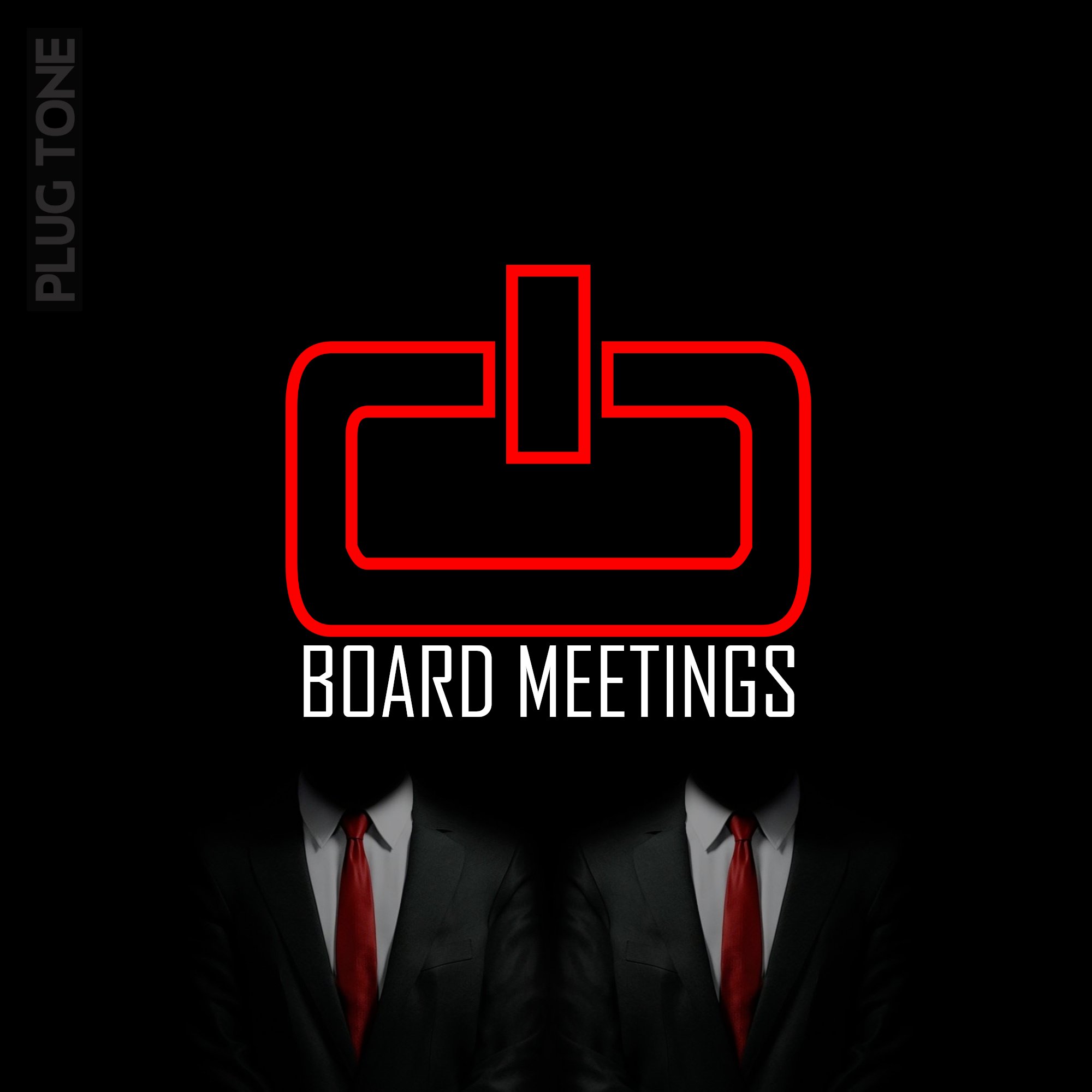





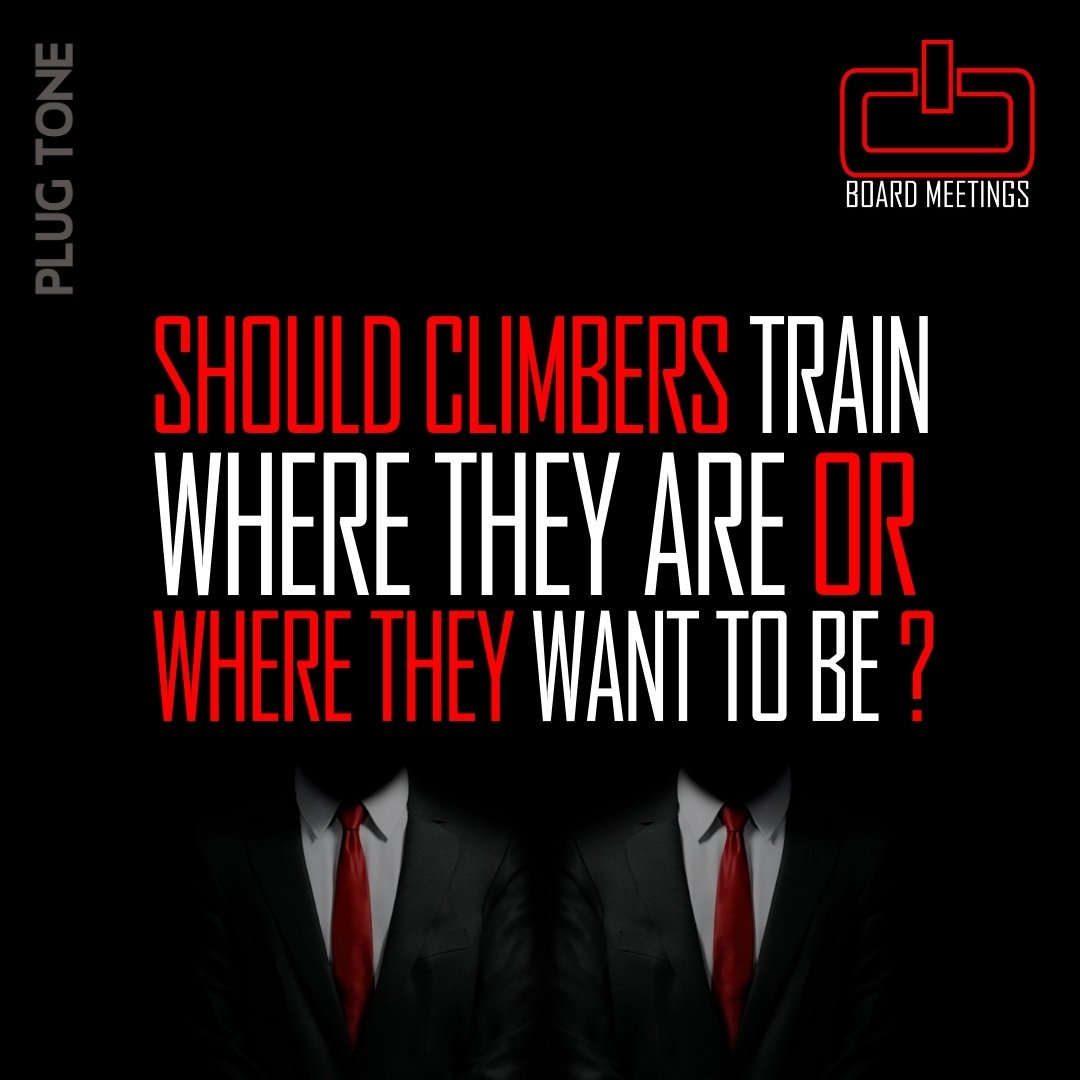


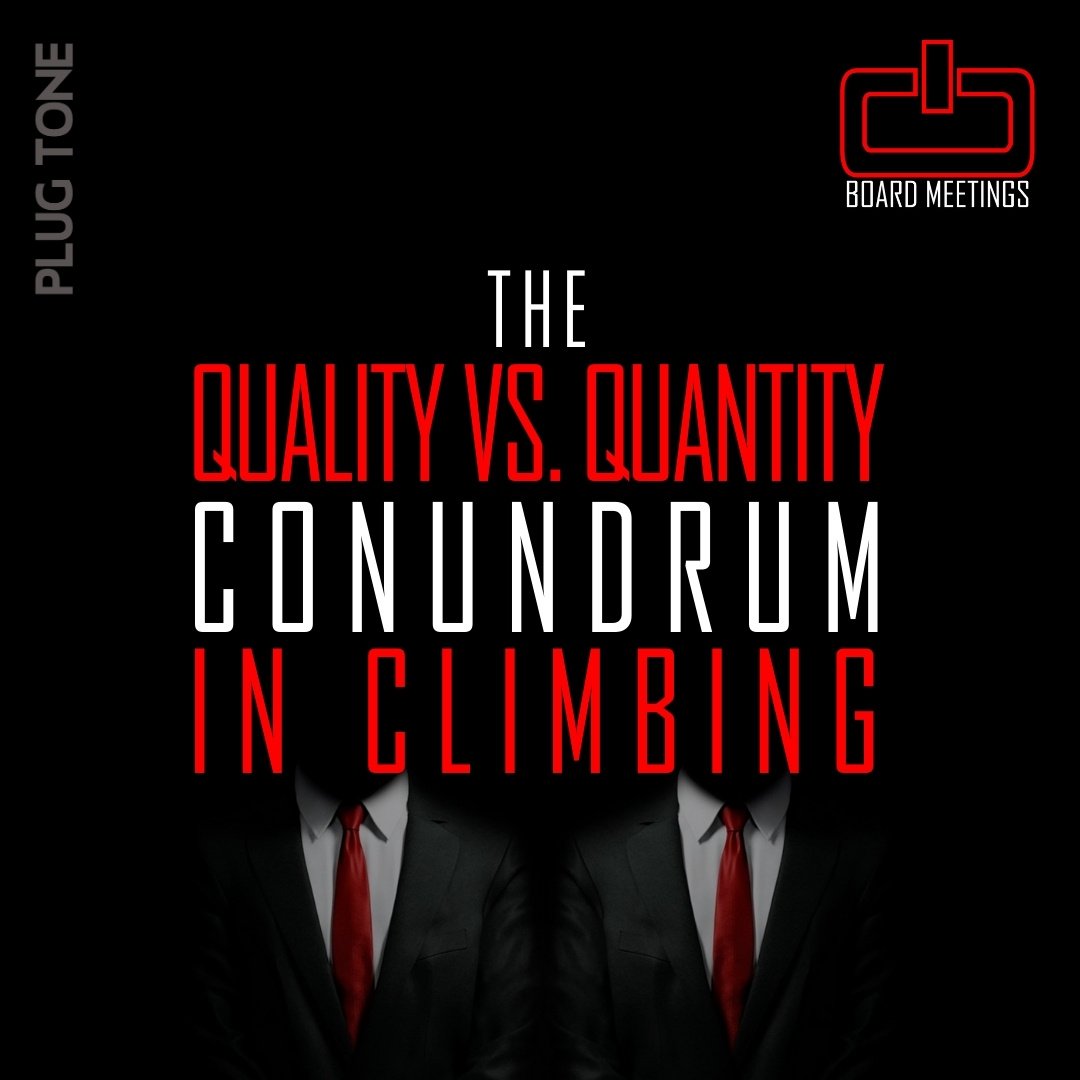
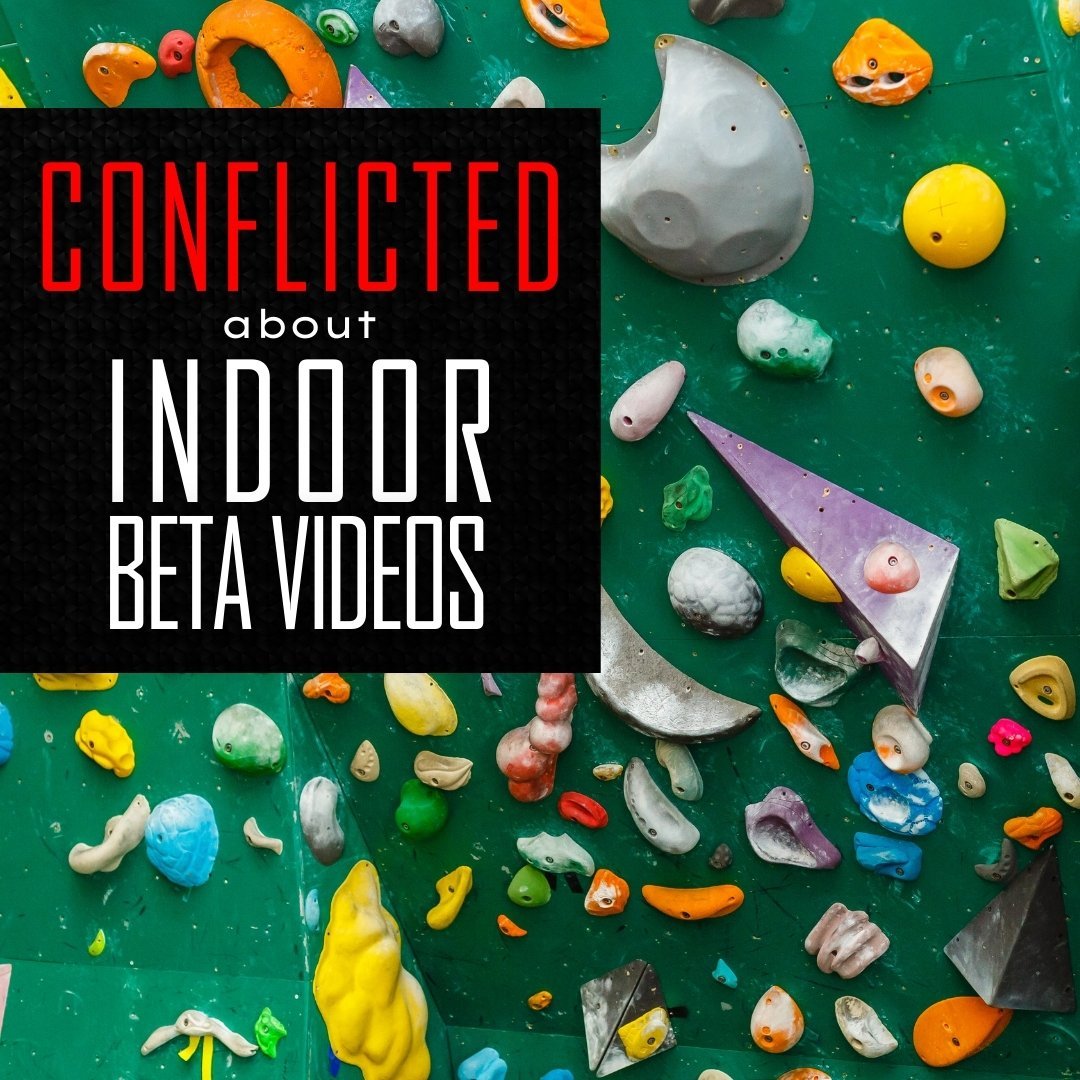
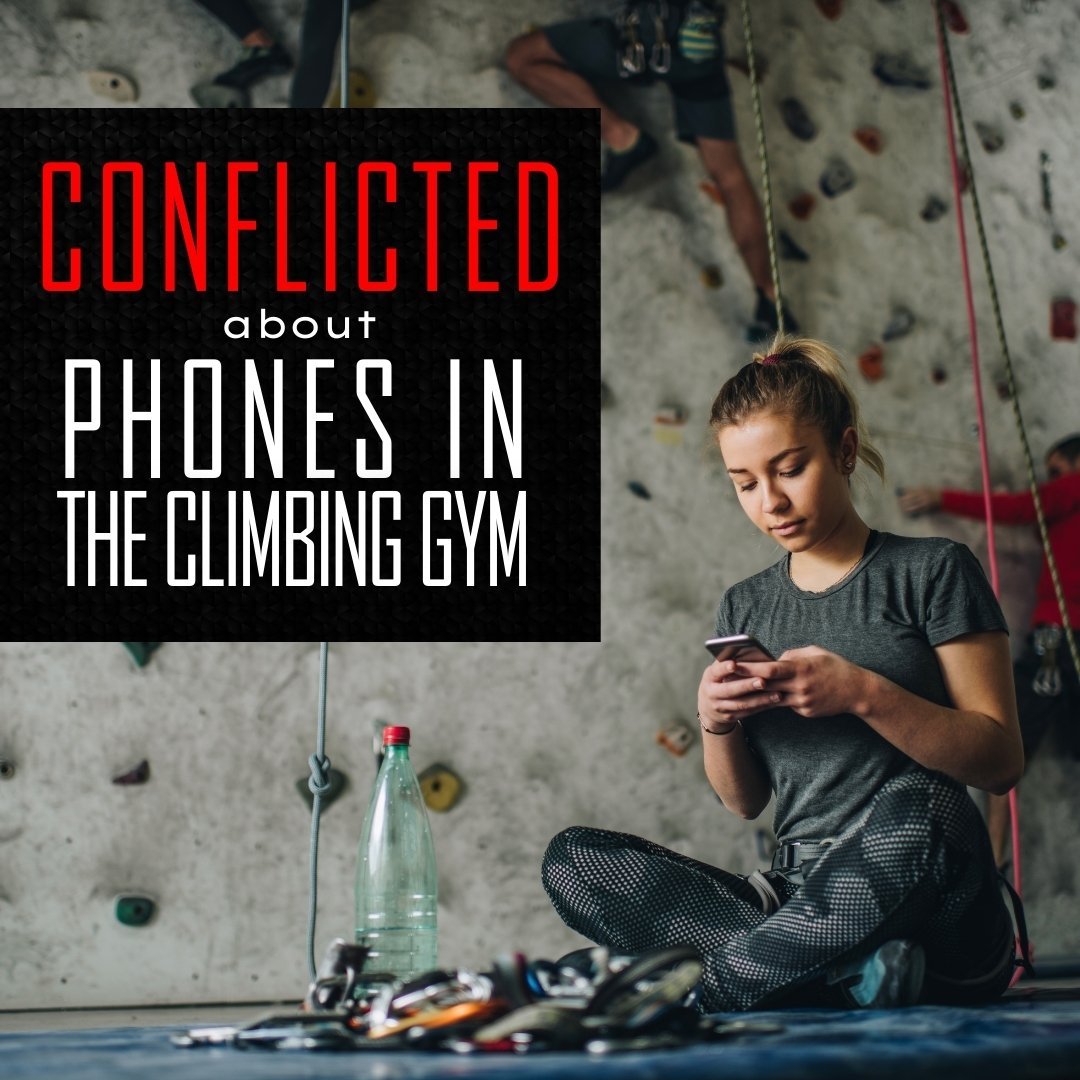
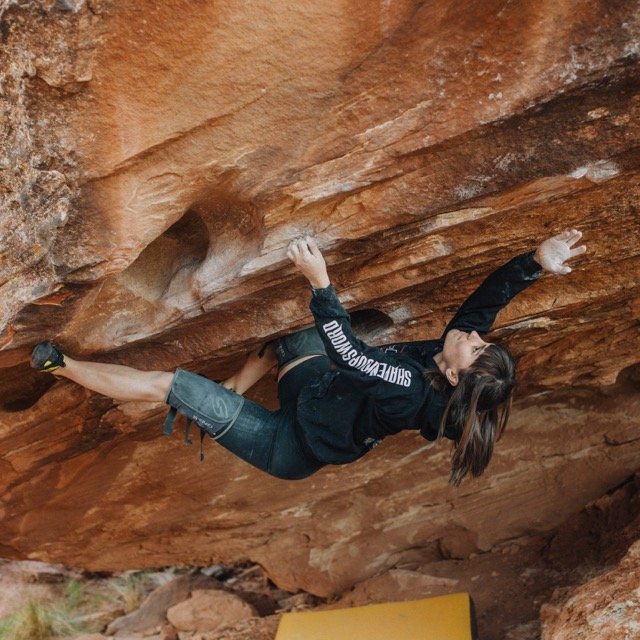
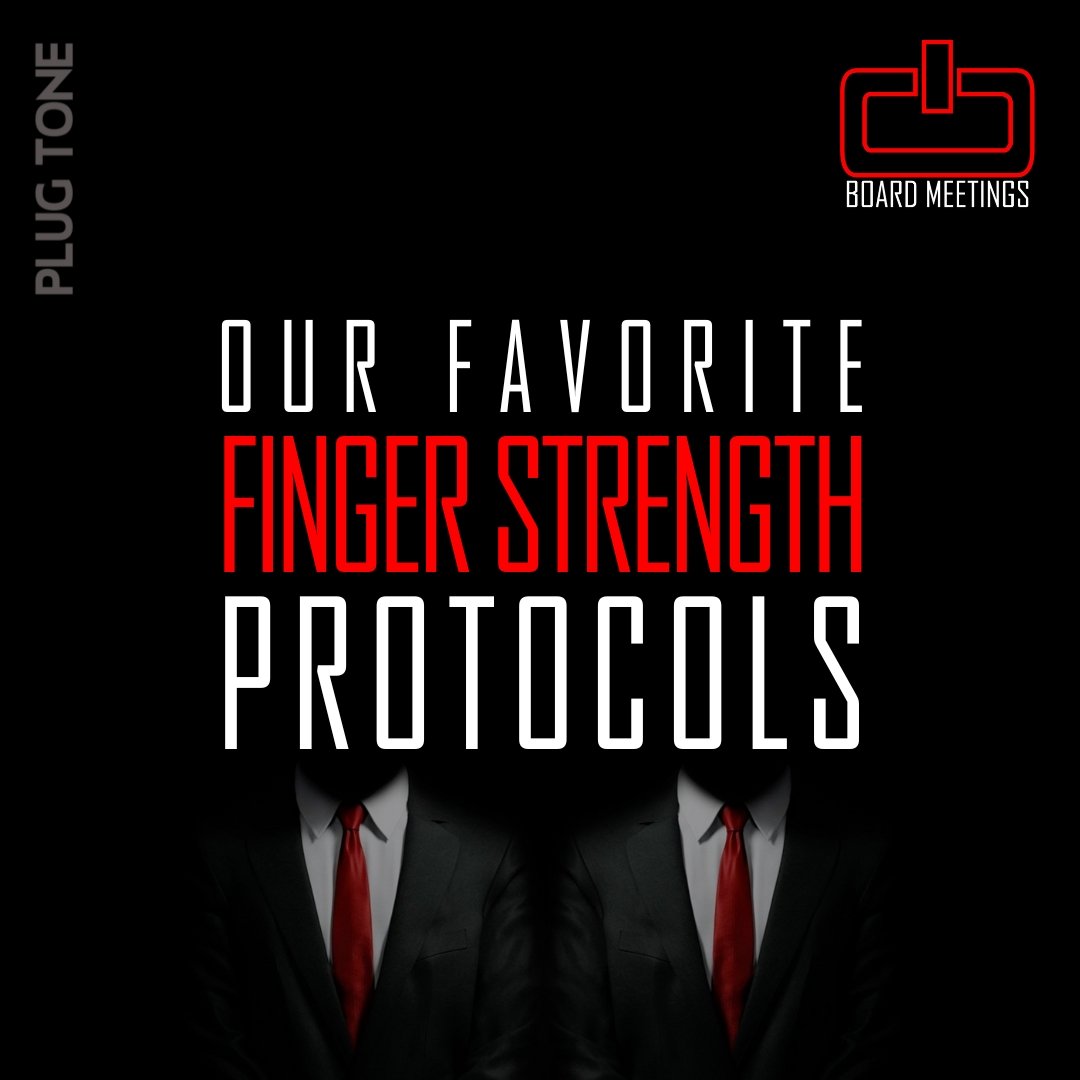
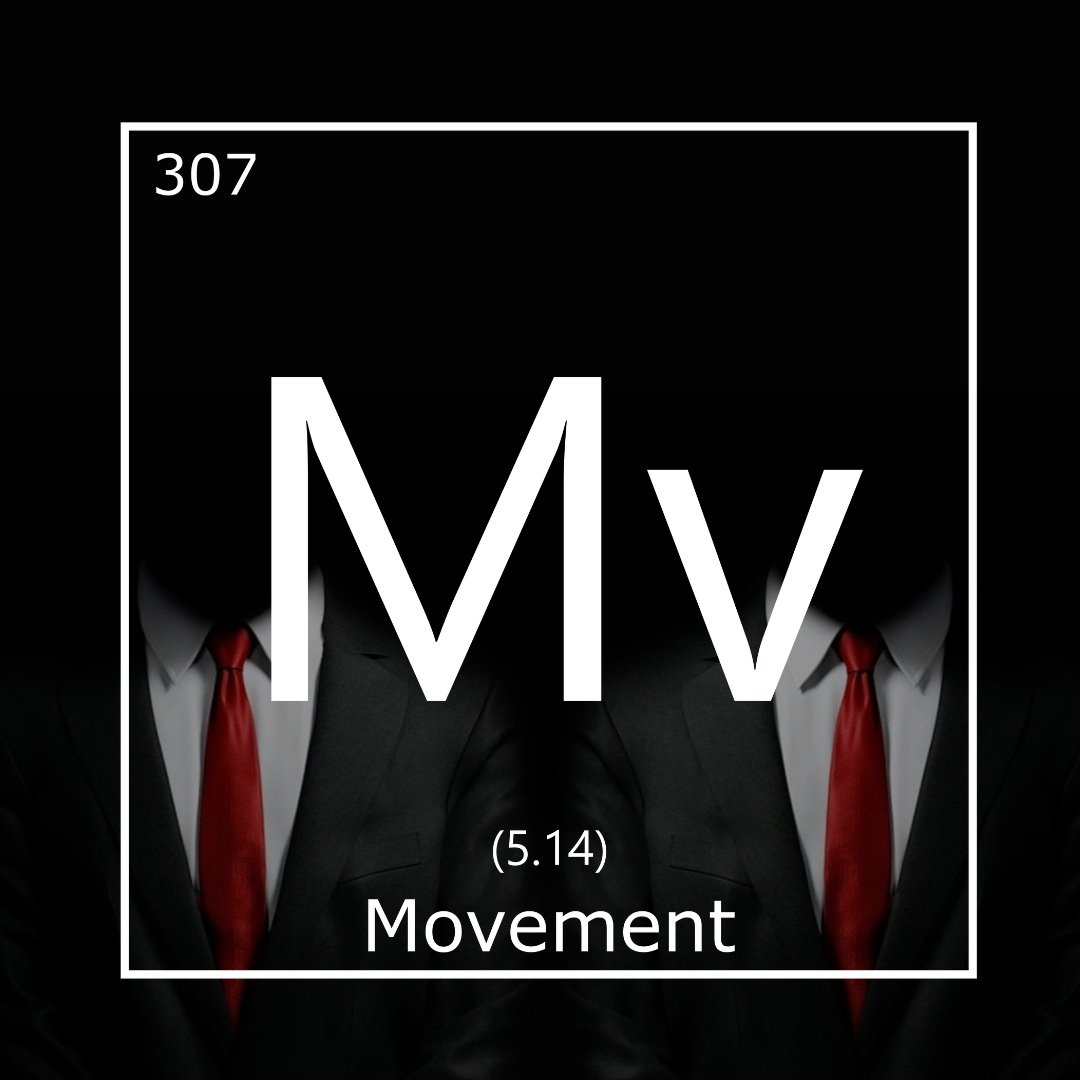
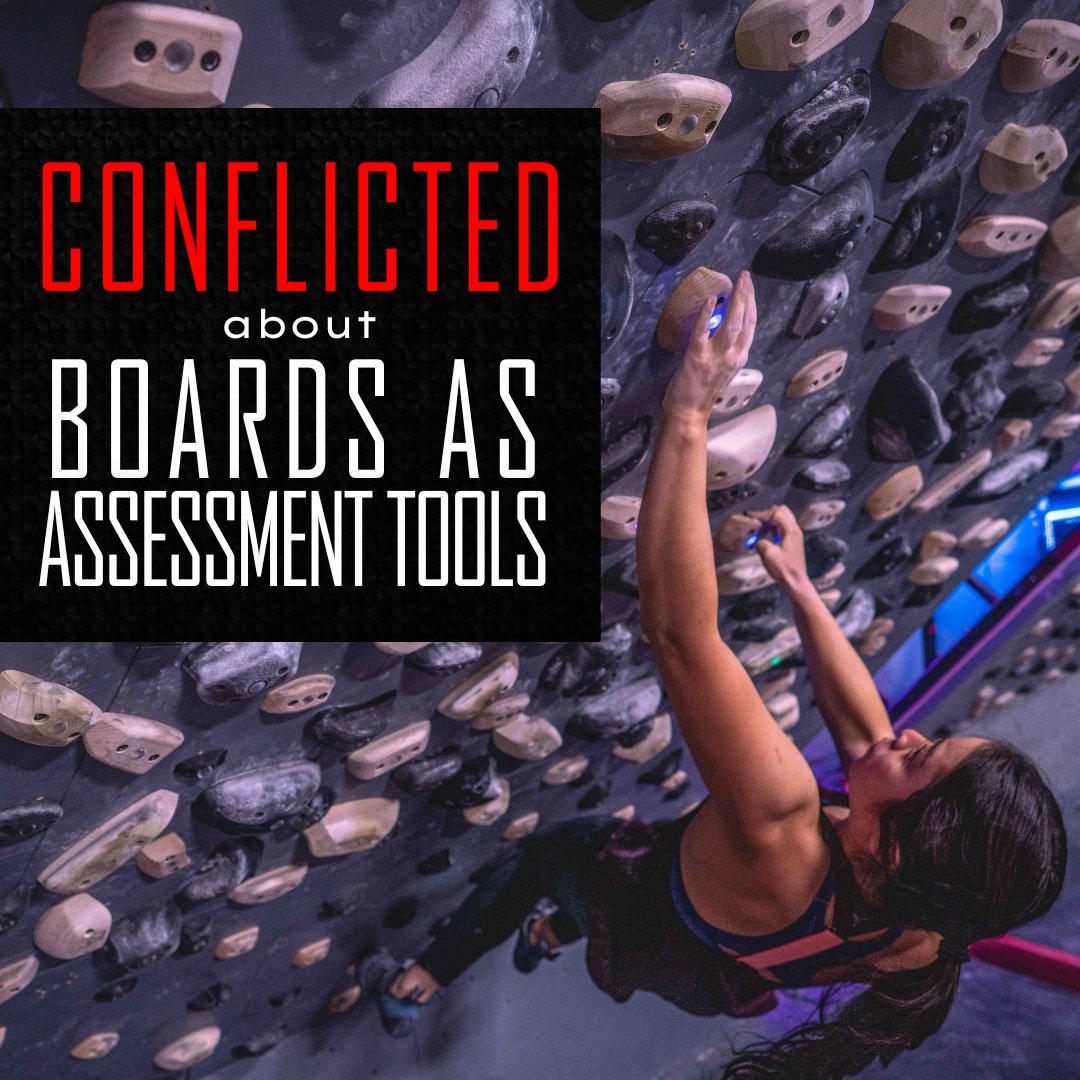
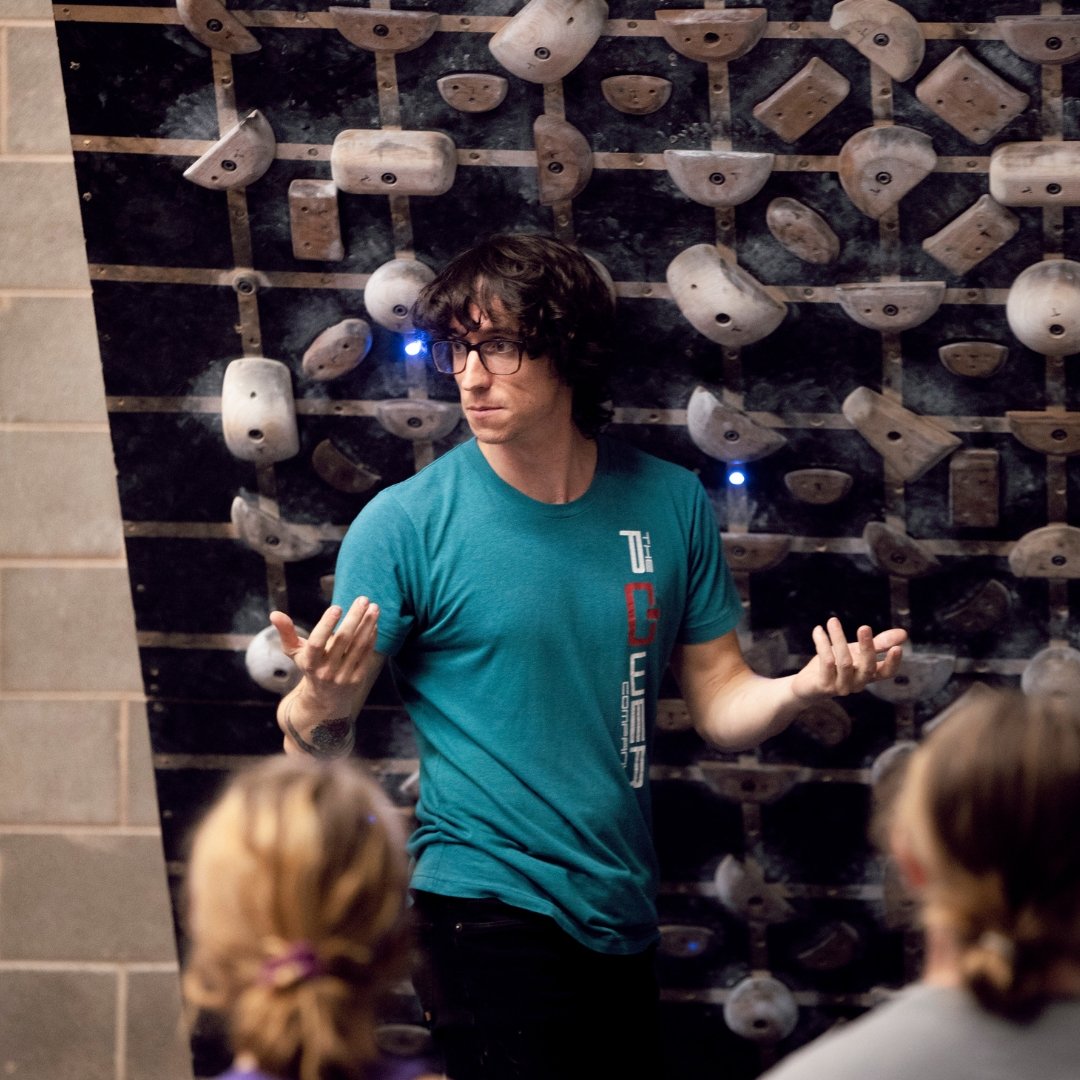
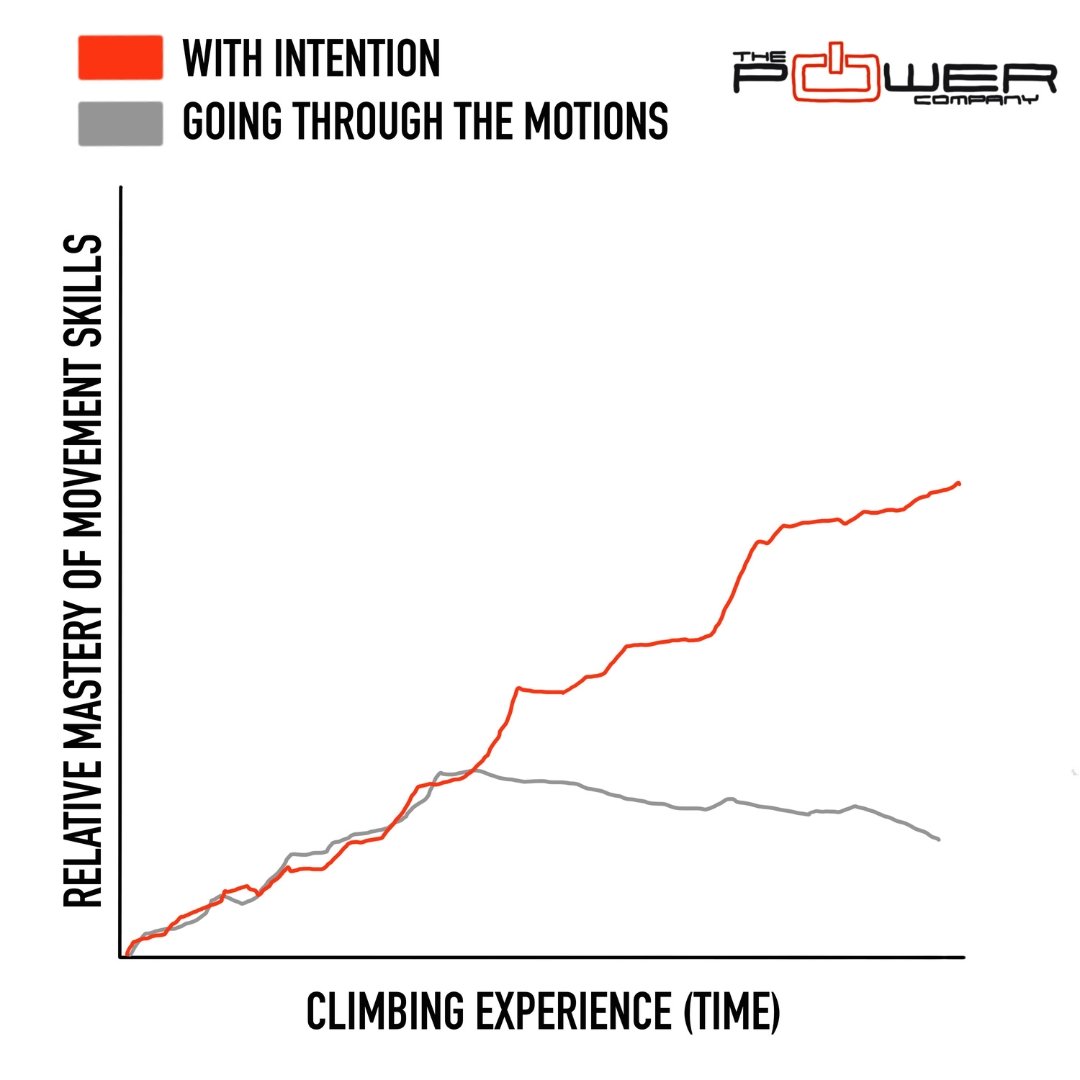




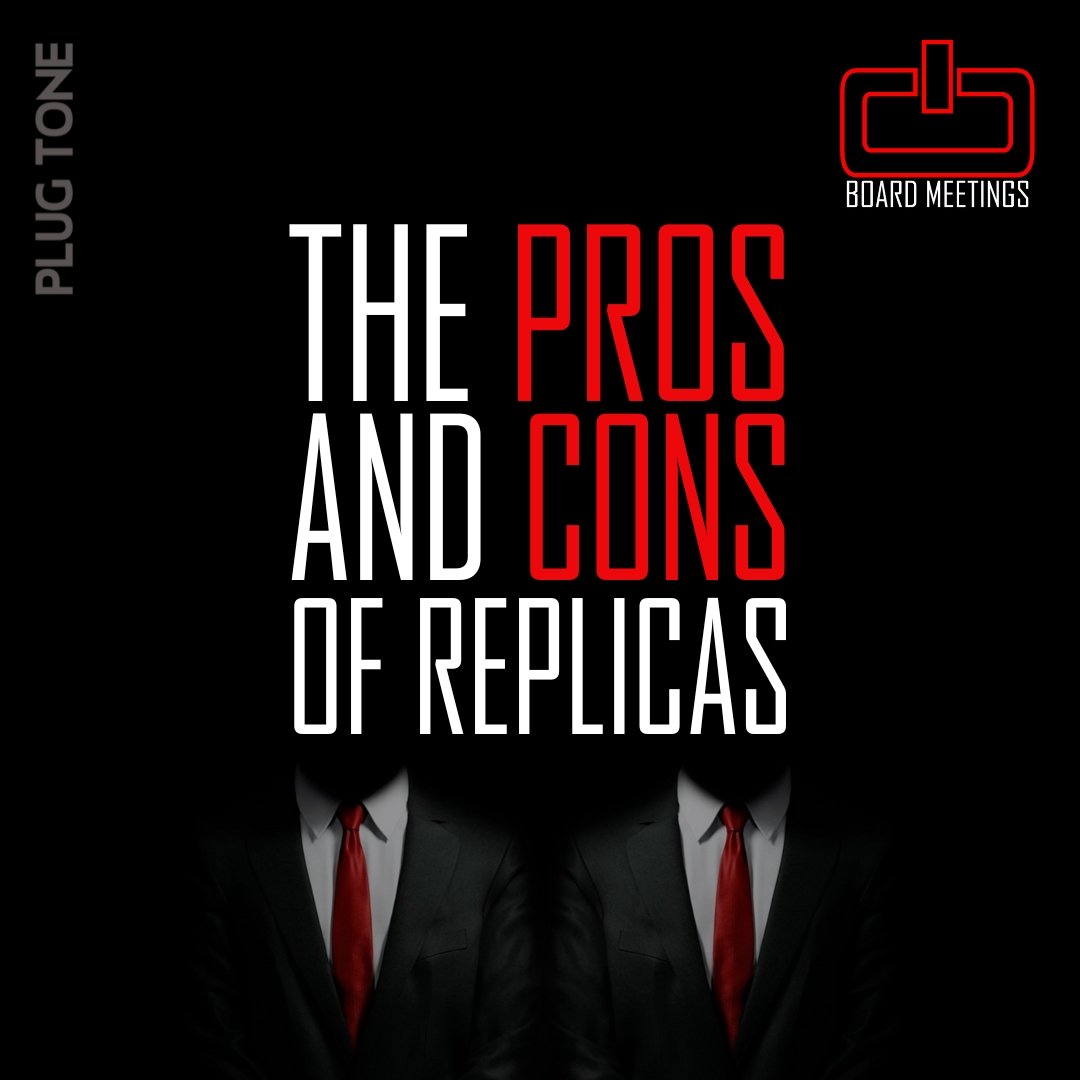


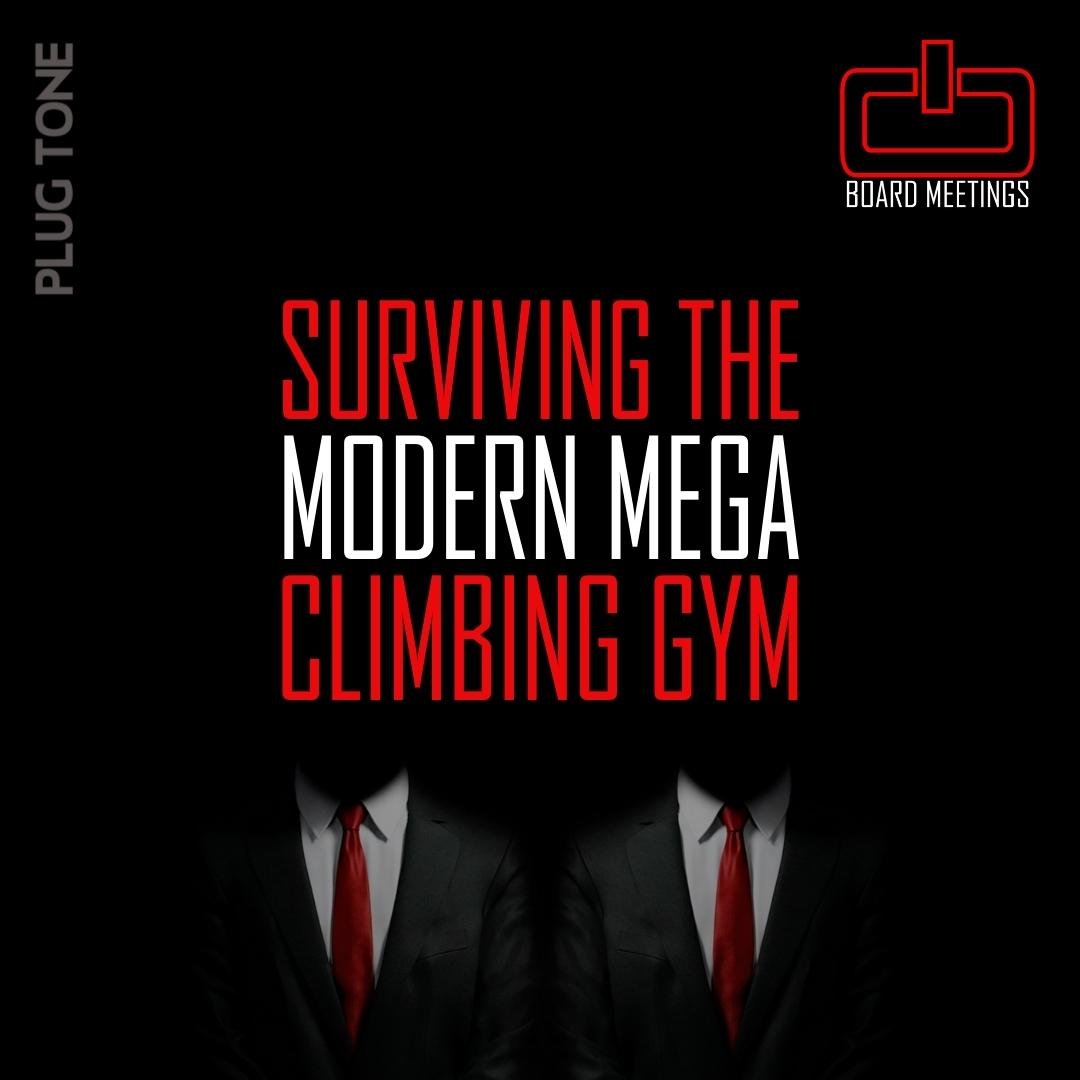


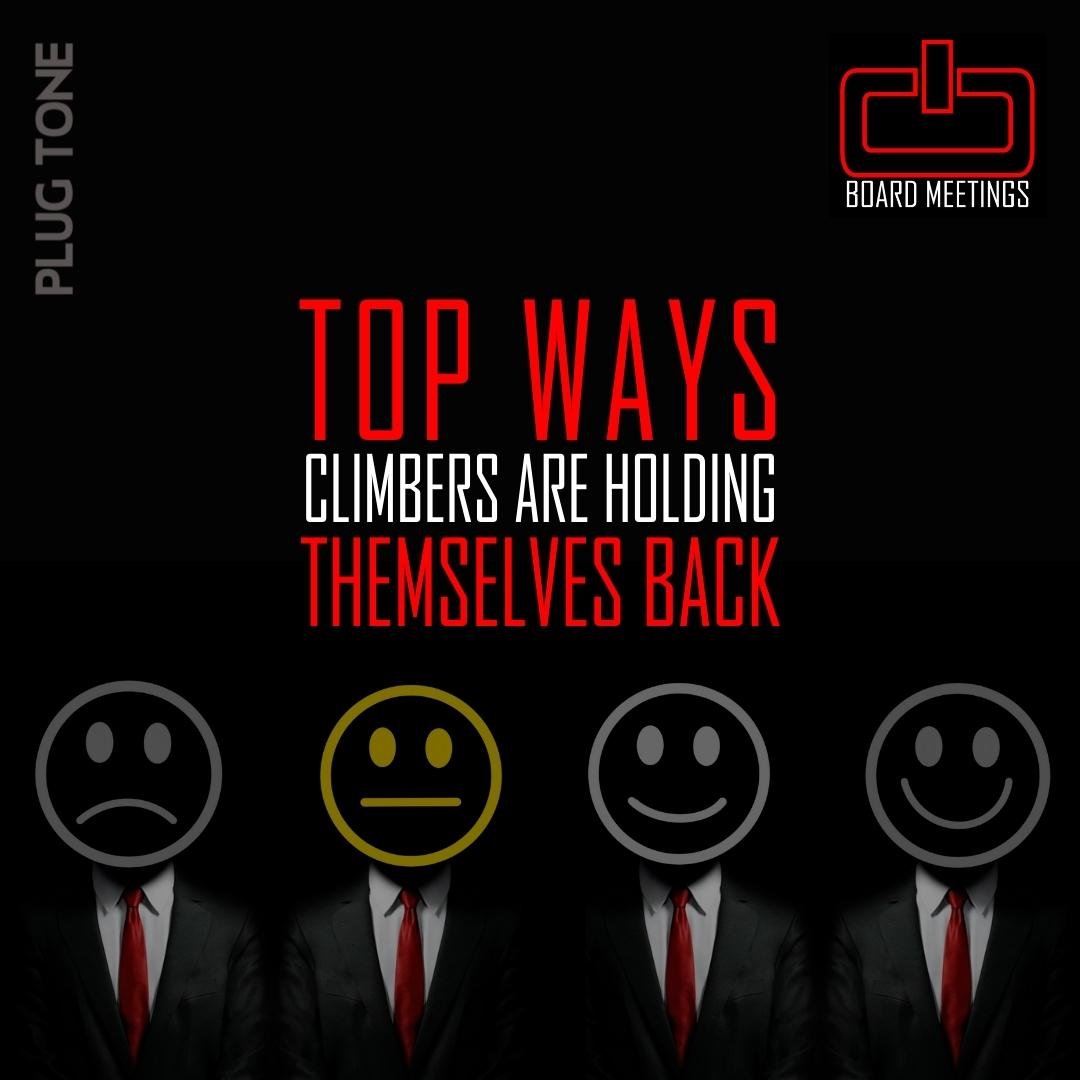



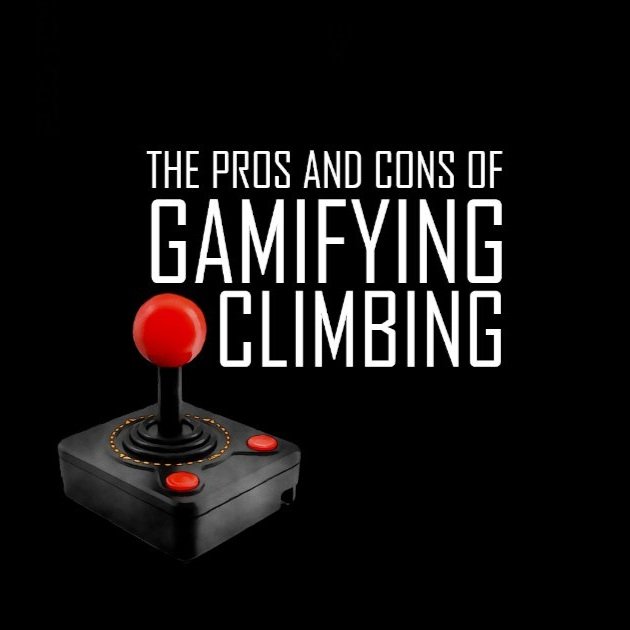





How can we make better use of our working goes in order to send hard things faster?